-
Car Reviews
- All reviews
- Midsize SUVs
- Small cars
- Utes
- Small SUVs
- Large SUVs
- Large cars
- Sports SUVs
- Sports cars
- Vans
Latest reviews
- Car News
-
Car Comparisons
Latest comparisons
- Chasing Deals
The flagship version of Honda’s new midsize CR-V SUV is impressive. But does it stack up as a six-month long-term ownership proposition?
In the short innings since its late-2023 launch, the new sixth-generation Honda CR-V has made quite the critical splash. And no variant in the freshen lineup has moved as much water as the flagship e-HEV RS version, the sole hybrid variant and perhaps biggest departure in form from its frumpy fifth-gen forebears.
Now the top-spec CR-V e-HEV RS arrives in the Chasing Cars garage for a six-month, 10,000-kilometre tenure, off the back of critical applause in both launch and garage reviews.
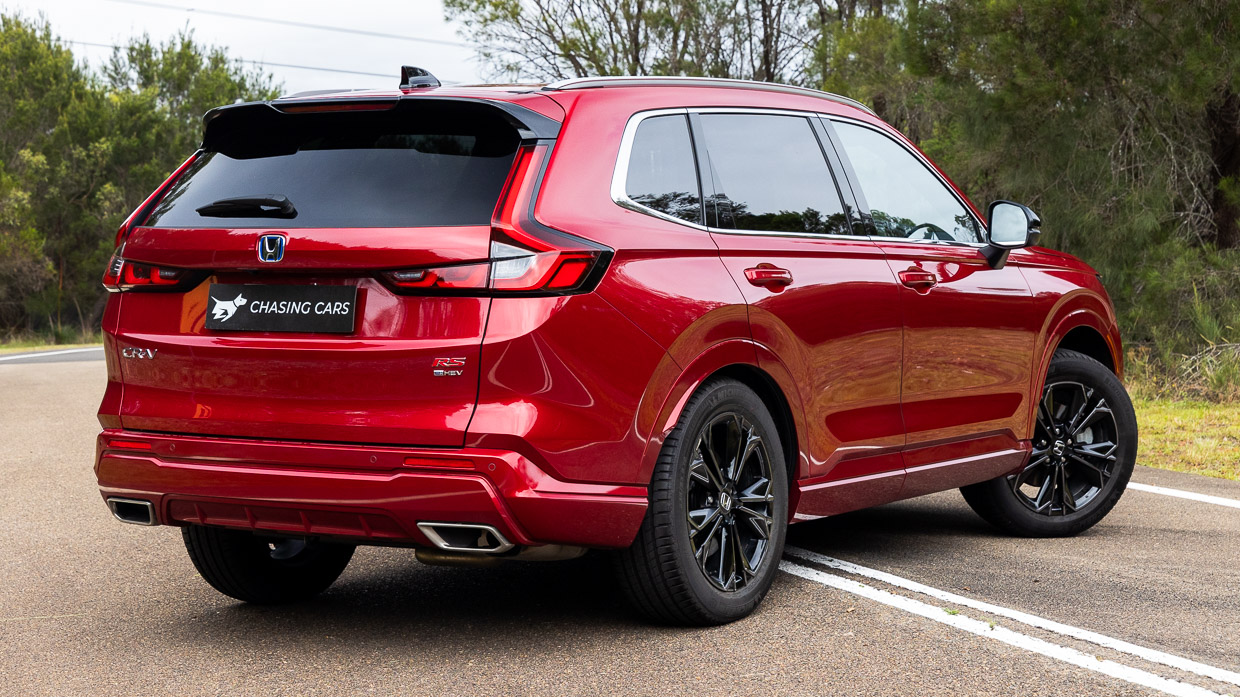
Our assessment thus far? At launch, we called the wider CR-V range a grown-up, refined and well-specced, a worthy rival to Toyota’s RAV4 that offers “magic” ride and handling balance.
Meanwhile, our deeper week-long garage review in the top dog e-HEV RS revealed best-in-range driving manners and miserly fuel consumption from its unorthodox front-drive hybrid format, though we concluded the ultimately the turbocharged-petrol all-paw VTi LX – the penultimate grade – is actually the smarter, more affordable sweet spot in the CR-V range.
With levelled-up credentials comes levelled-up pricing: the entry point for CR-V jumped a whopping $8510 with gen-six’s arrival (albeit not in like-for-life replacement trim) while the flagship hybrid’s $59,900 ask sees Honda’s midsize SUV scaling new outlay heights.
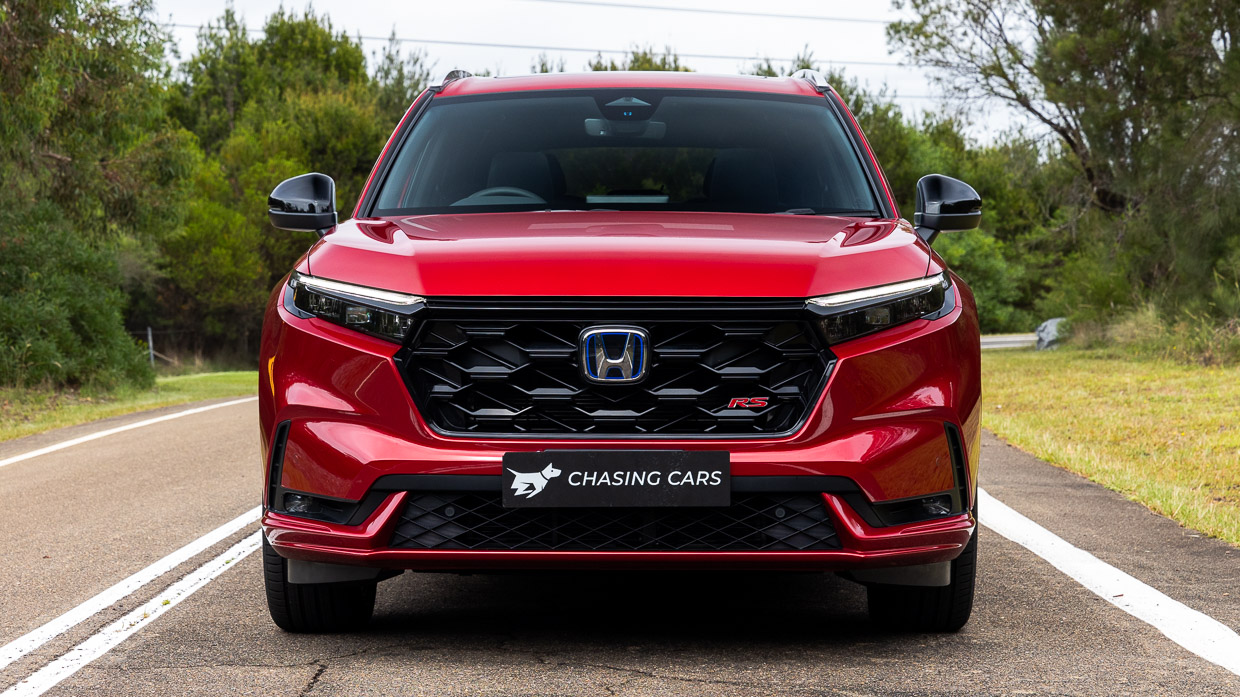
Enter ‘Fred’, as I’ve nicknamed our example, and for a couple of reasons. But it’s mostly because it’s short for ‘fiery red’, of course.
Sure, that’s not very imaginative, nor even the name of our new long-termer’s actual colour (called Ignite Red). But it’s vastly more memorable than e-HEV RS, a backronym for Comfortable Runabout Vehicle Electric Hybrid Electric Vehicle, where the ‘RS’ suffix is either Road Sailing or Rally Sport depending on your chosen intel source. Fred, though, is easier.
So, Fred it is.
Petrol versus hybrid, and how the CR-V’s e-HEV drive system stacks up on fuel economy
The no-brainer test of our entire six-month tenure with Fred, our e-HEV RS long-termer, was to assess how CR-V’s hybrid take measured up against the petrol alternative. So simple in theory, less straightforward in practice.
We’ve covered this off before, but Honda simply doesn’t offer a CR-V in a similarly high trim grade as the RS with the 1.5L turbo petrol engine offered everywhere else in its range. At least, not in front drive or just with five seats, or both of those choices combined.
So we settled on pitting Fred against the mid-grade VTi L7 (see more in our separate review) for our fuel economy test. And before you yell “unfair fight”, yes, we know this petrol nemesis is a seven-seater…and at $53,500 driveaway, the priciest petrol front-driver of the range is still $6900 more affordable than the e-HEV RS.
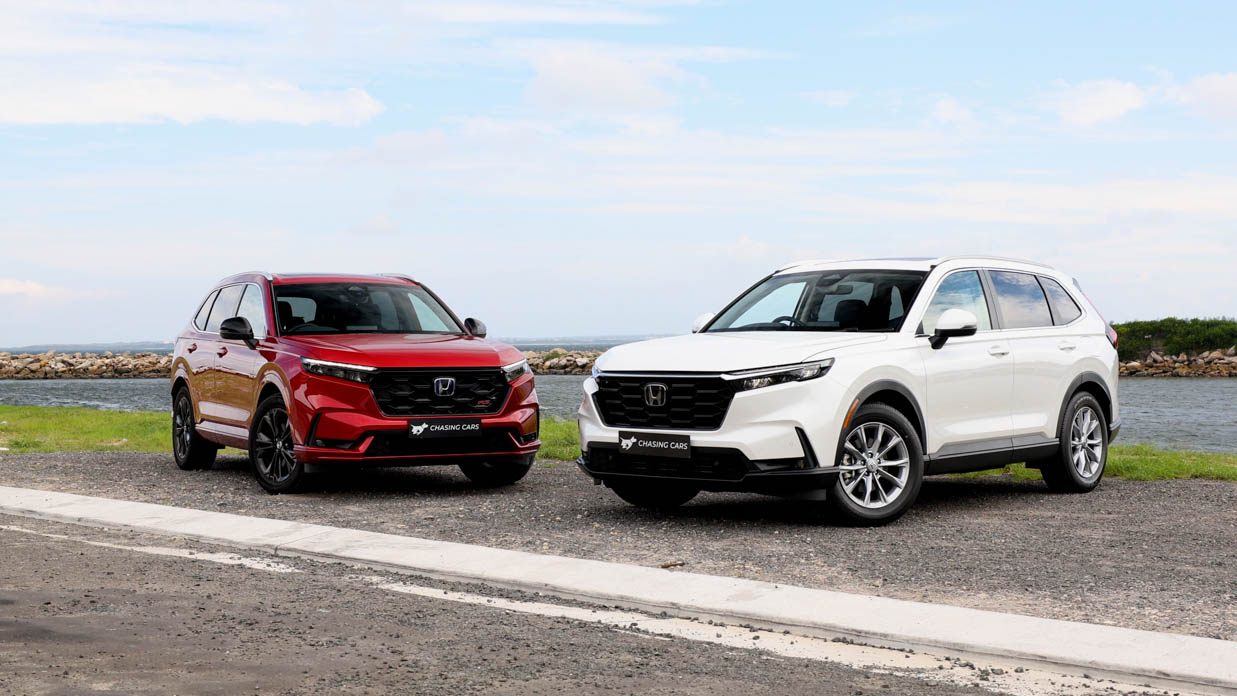
Anyone else notice that the formerly $59,900 ‘Fred’ spec CR-V just copped a $600 price hike (now from $60,400 driveaway) this month?
Why the VTi L7? It’s simple. The high-spec seven-seater is, at 1700kg, the heaviest front-drive petrol CR-V. And thus, it’s the closest option to porky e-HEV RS, which clocks in at 1771kg kerb.
It’s a simple test. There are 50 kilometres of urban, meaning under 70km/h including stop-start driving. And there are 50 kilometres of highway, meaning non-stop in a 90-110km/h band. Both are conducted in sympathy with real-world traffic flow, midweek and middle of the day, with both vehicles within eyeshot of one another at all times.
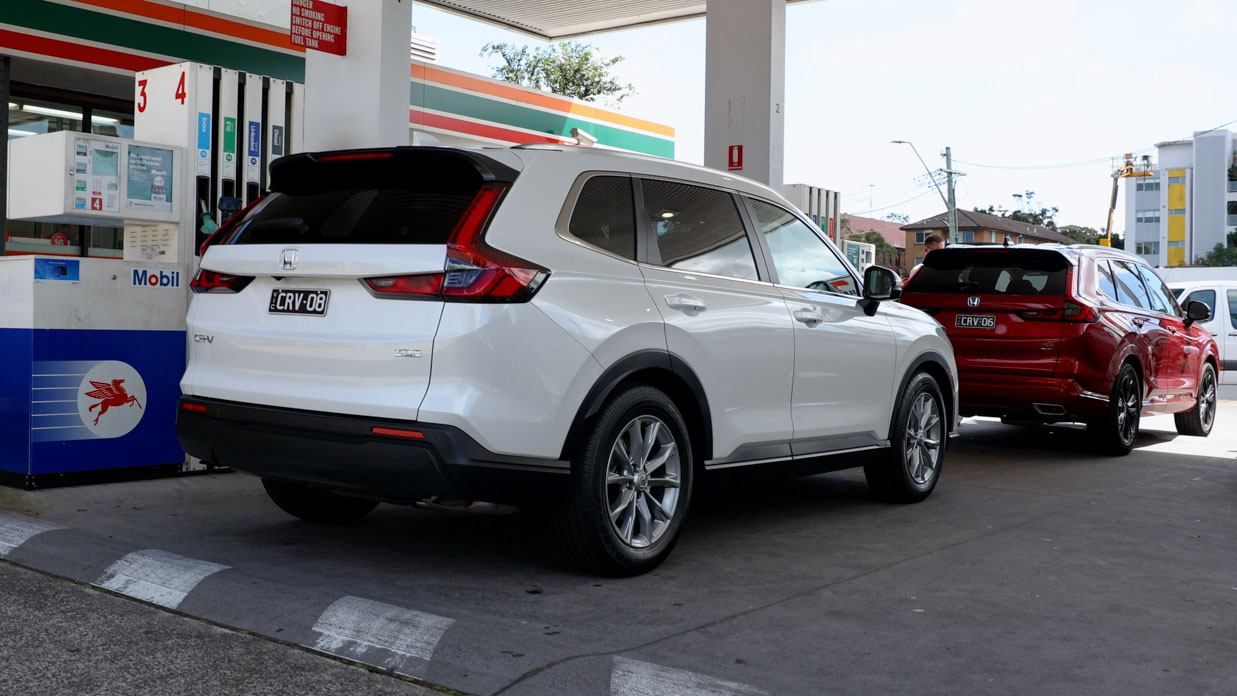
How do we measure it? Each car is brimmed to two trigger clicks on the same pump, repeated at the beginning and end of each testing stint, with odometers measured each time. The only real caveat to this is that distance is measured using Google maps, not by the car’s onboard computer as the latter so often proves quite inaccurate, usually towards a too-positive outcome.
Anyway, that’s the science behind it that allows separate as-tested urban and highway consumption. Add both, divide by two, and you have a real-world combined figure. Easy.
The results? Around town, the petrol VTi L7 returned 9.3L (against its 9.4 claim). Meanwhile, the e-HEV saw 5.6L, which is far rosier of course, if quite a bit short of Honda’s advertised 4.9L claim.
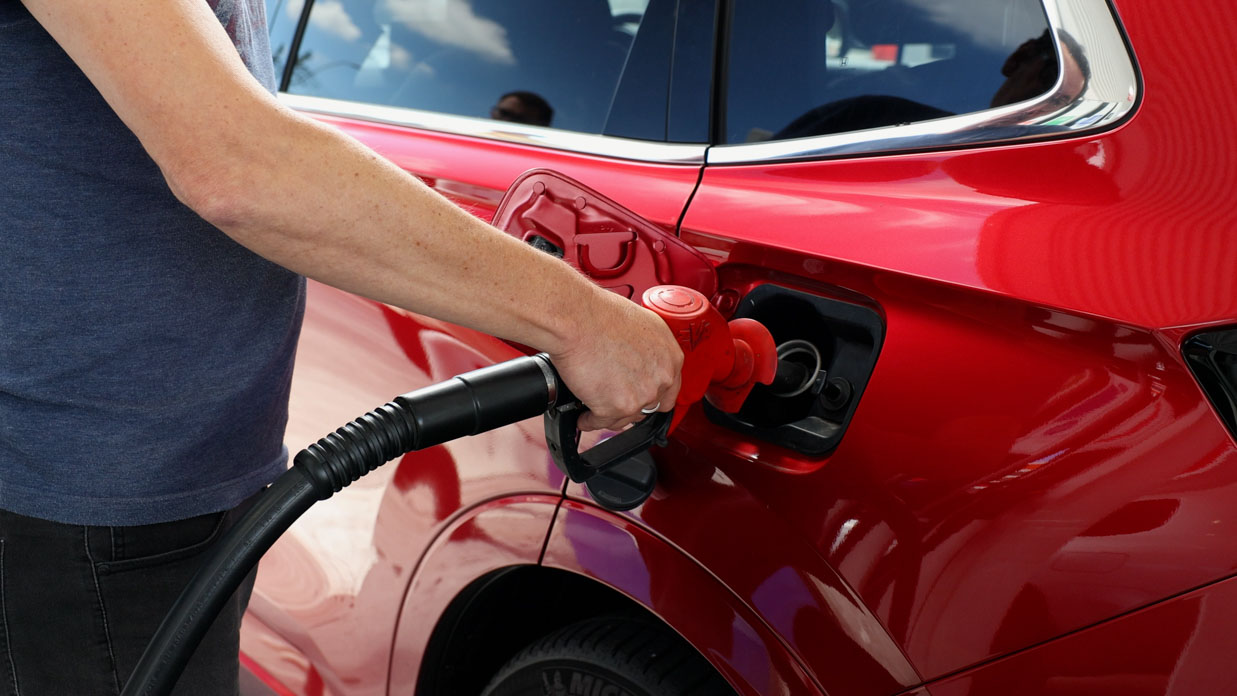
Out on the open road, the petrol’s consumption dropped to 7.1, or a full-litre thirstier per hundred kilometres than what Honda claims (6.1L).
On the highway, the e-HEV hybrid system returned 6.2L consumption, which is better than the petrol version, quite close to Honda’s form guide for extra-urban consumption (5.8L), and about where a good many of its hybrid rivals tend to hover about for this measure: the low sixes.
Combined real-world average? It’s 8.2L/100km for the VTi L7 petrol and 5.9L/100km for the e-HEV RS hybrid. For the record, Your Honour, Honda’s advertised claims are 7.3L and 5.5L respectively for these two variants.
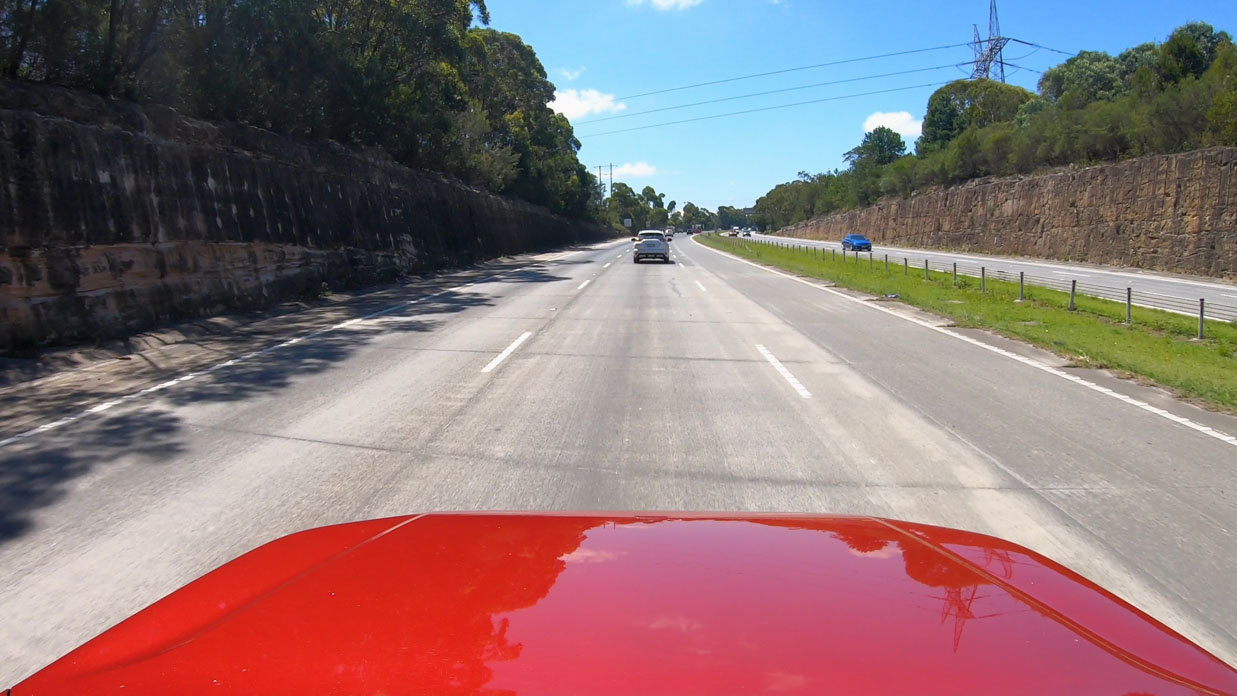
We must say, Fred’s fuel consumption, and on crappy 91-octane at that, is damn close to what Honda promises on the box. With different conditions favouring optimum consumption – a lighter right foot, mostly eco drive mode usage – we don’t doubt that Fred would nail its claims to the millilitre.
None of this fuel economy talk addresses the differences the two CR-V demonstrated in drivability.
The 1.5L turbo petrol outputs 140kW and 240Nm, the all-important latter figure from 1700rpm from an engine that frankly favours off-the-mark torque and really works hard for its keep once the revs rise. It’s not the most muscular and effortless powertrain without passengers, and sweats harder the closer you get to filling all seven seats.
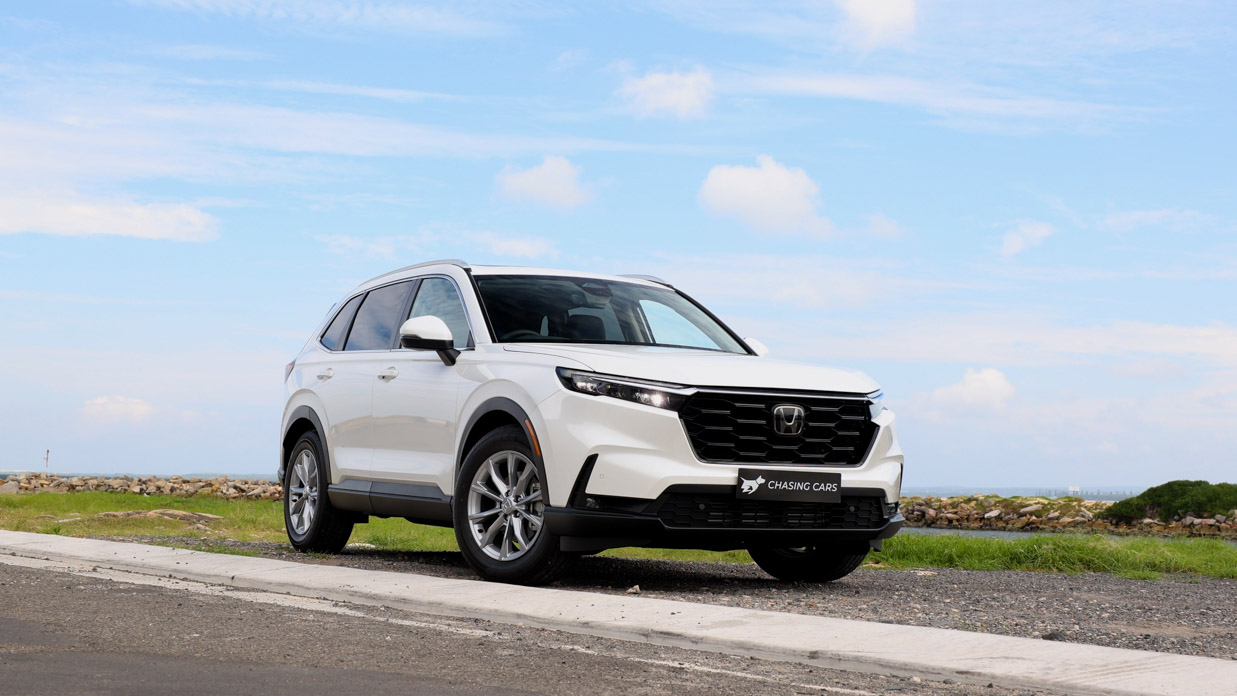
The hybrid’s 2.0L naturally aspirated Atkinson Cycle engine and (dual) e-motor combination scales higher 152kW peak system power while plying 335Nm of electric shove from zero rpm.
In sport drive mode, the e-HEV system is a bit spicer in character than the 1.5 turbo, offers a modicum of extra shove everywhere and comes completely with a pleasingly (if fake) sporty soundtrack and faux upshifts from the e-CVT transmission. But a muscle car it’s not.
In the months thus far, Fred has remained almost exclusively pinned in normal drive mode. It’s responsive, it’s balanced, and as our economy test proves it’s suitably frugal against its claims.
You do have to live with noticeable and frequent petrol-electric switchover points compared with the turbo petrol but, in our opinion, is a fair trade for the dividends e-HEV brings.
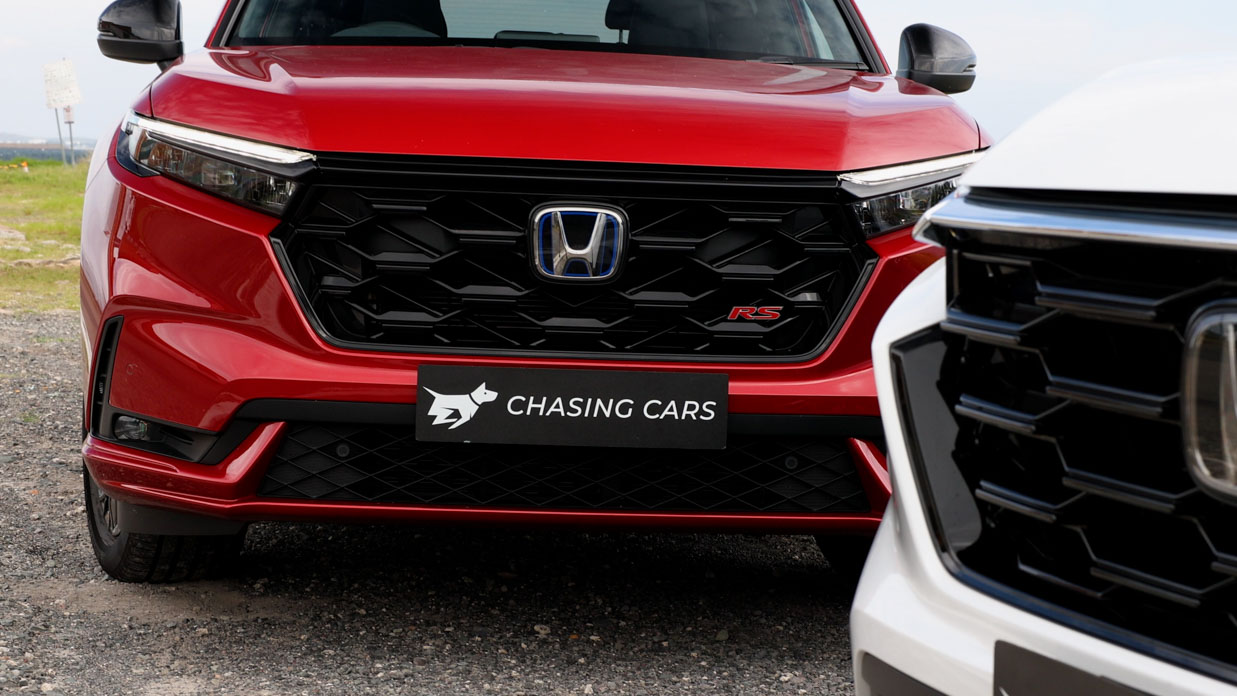
But two questions remain. Is circa-six-litre consumption adequate enough given the complex tech at play as outlined in the previous update?
And is it stiff enough competition for Toyota’s RAV4 that regularly proves more frugal in the real world and is offered in more affordable guises within its own range than simply a reserve for top-dog flagship status, as is the case with the CR-V?
We’ll address these key questions in our final verdict…
This month, Zak Adkins pinches Fred’s key and heads north on a road trip to Queensland’s Sunshine Coast – what’s this about?
Two hours in and the regret is settling in: I stupidly forget each and every time how far it is to drive from Sydney to Brisbane.
From door to door, it’s 921 kilometres give or take to get to my parent’s apartment in the (mostly) Sunshine State.
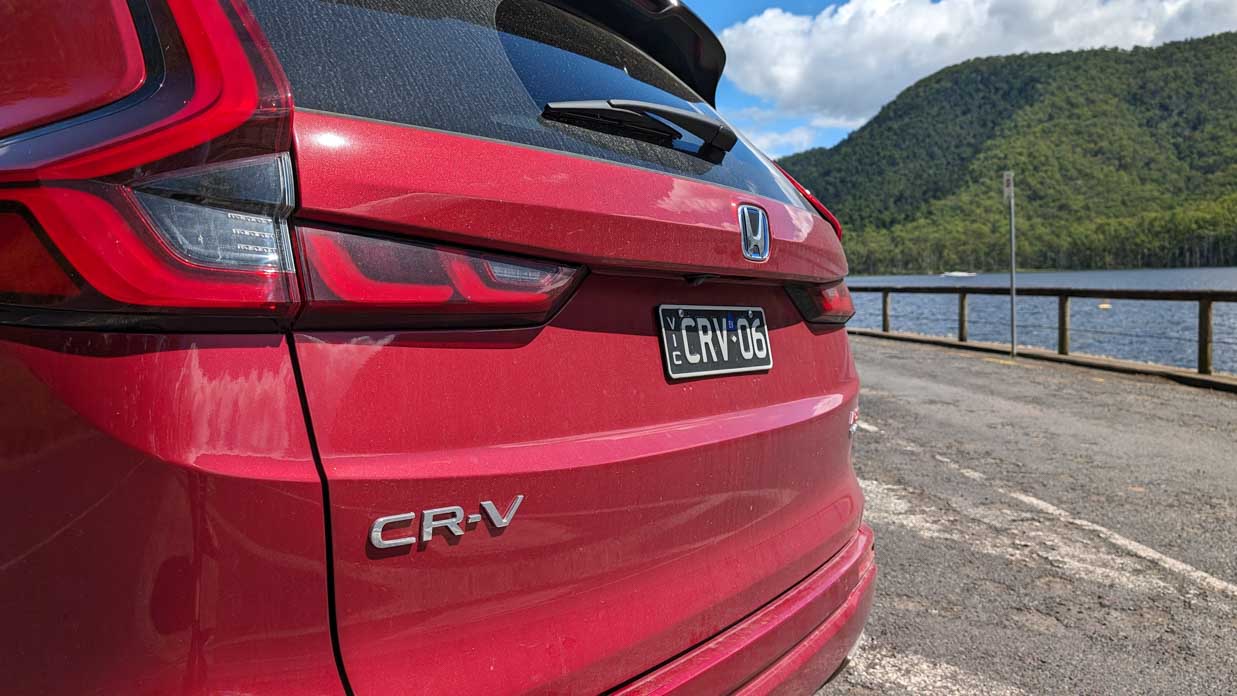
And just a couple of hours in, I’m exhausted, and oddly not feeling like driving at all. I pull over to a rainy truck stop by the highway and nestle myself into the backseat of Curt Dupriez’ long term Honda CR-V. It’s 5am, the sun is still down and out and I manage to find some sleep.
After an hour or so of glorious rest, I’m up and back on the road, surprisingly much more sprightly than before.
Honda’s midsize SUV settles into a pleasant rhythm as the highway kilometres roll on. I have the nice-sounding Bose sound system blaring my Spotify playlists to keep me awake and, for the most part, the CR-V is a pretty smooth driving experience.
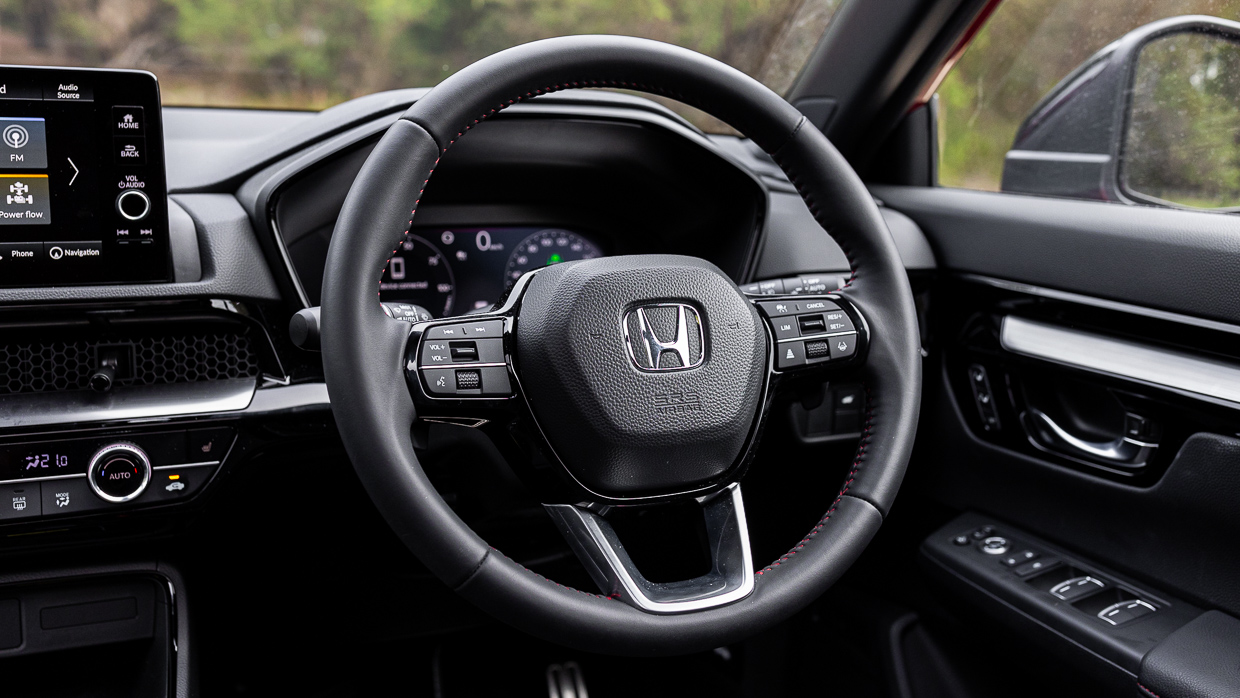
The only bugbear throughout the journey is the lane-keep assistance system, which is off-putting and snappy, but this can be cured through the use of easy-to-use steering wheel buttons and jumping into a submenu. Easy.
Between Sydney and Brisbane, the hybrid CR-V averaged around 6.0L/100km which isn’t too shabby for a midsizer, but the SUV definitely seems more efficient around town.
The hybrid system is able to charge the battery much better using regenerative braking, but that just doesn’t happen as much as I’d like it to on higher speed freeways.
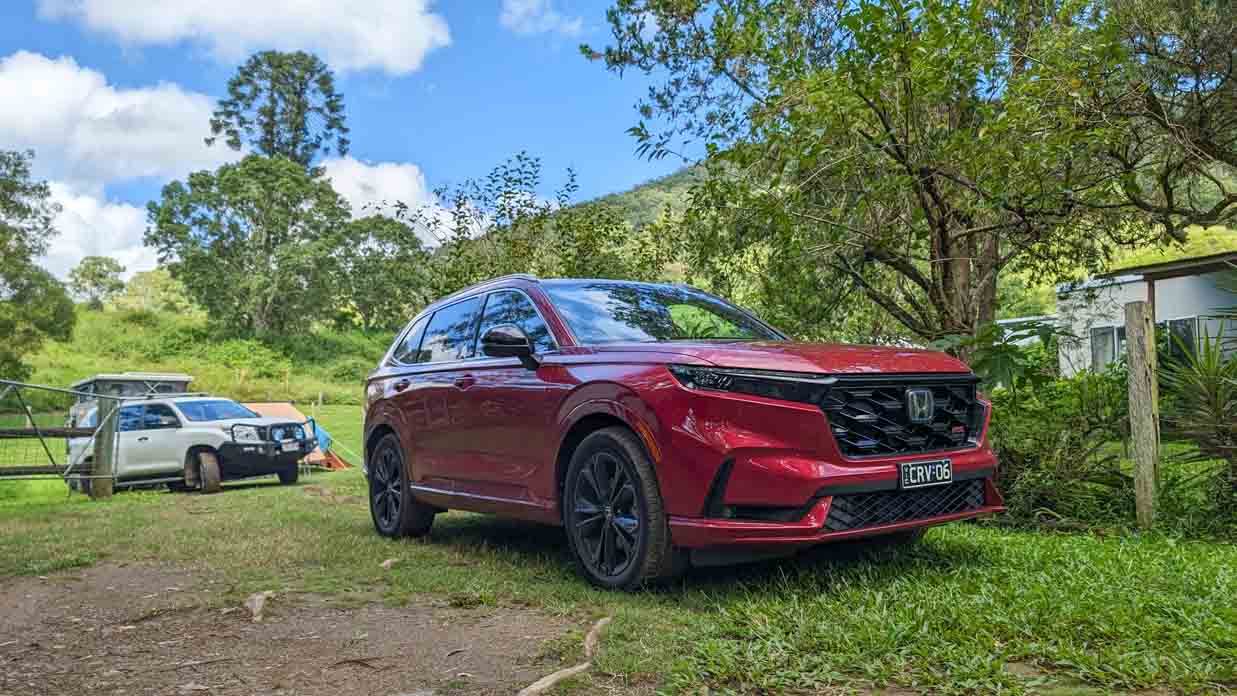
After a weekend spent in Brisbane, I decided to head north to Maroochydore on the Sunshine Coast, only for it to rain pretty much the entire time.
The CR-V was the perfect candidate for running errands to the shops and back, and ultimately felt grippy in the worst of conditions, despite the fact it is only front-wheel drive.
I enjoyed the comfort of the cabin, the nicely upholstered premium leather seats, and very intuitive instrument cluster. This digital driver’s screen would have to be one of the best in the business.
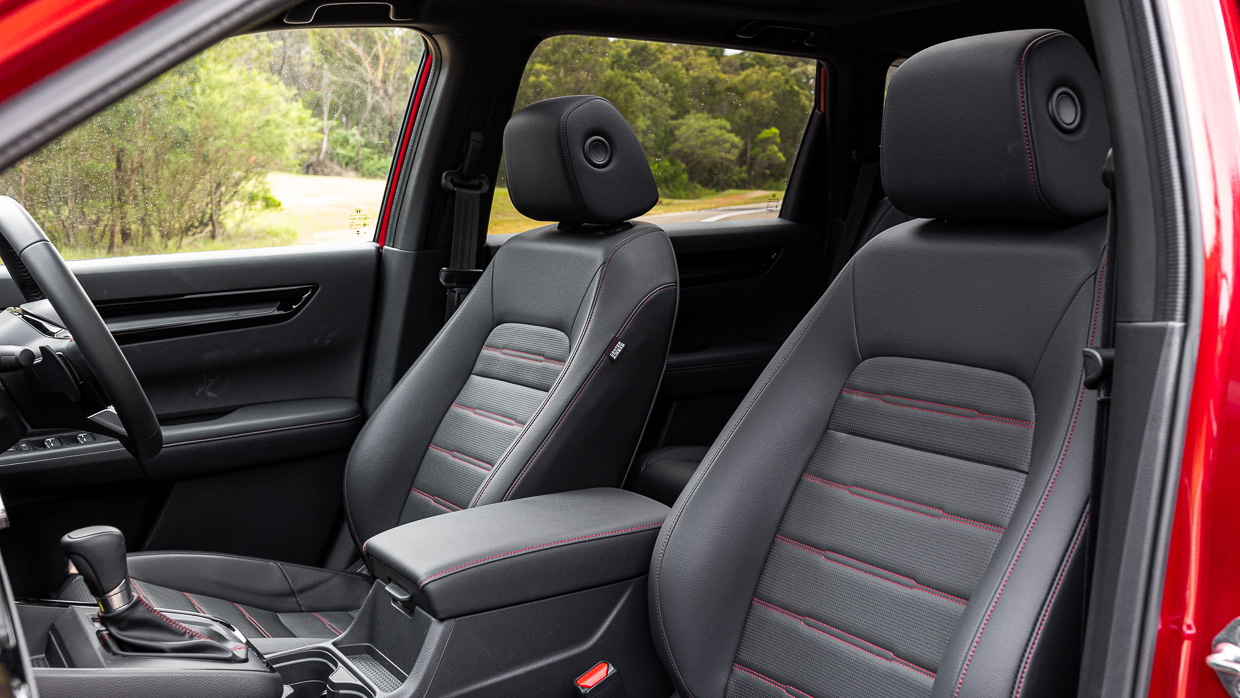
For the Easter long weekend, my Queensland-based family and I decided to go on a bit of a camping trip up to Kenilworth, a small country town located near the Mary River.
We don’t pack lightly, but after I dropped the rear seats (which almost fold flat) we easily managed to fit two large swags and a whole stack of gear in the boot, with plenty of room to spare.
On the way up, I couldn’t help thinking just how pleasant the CR-V was. It’s comfortable, has supple ride quality, is pretty fuel efficient and looks pretty good, too. As we arrived at the campsite and got stuck into chocolate and beverages, I reflected that the red Honda SUV is a car I could totally own.
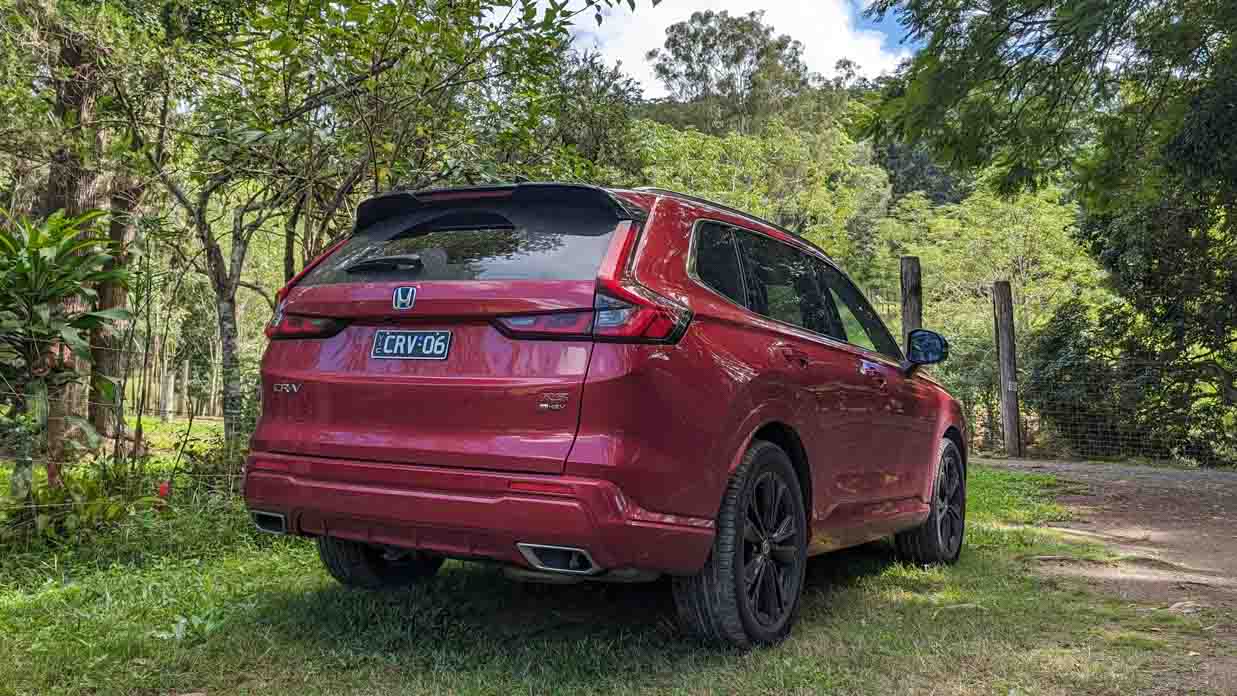
It might not be all-wheel drive, and it certainly isn’t a budget SUV, but it ticks almost all the right boxes.
But for now, the rain has eased, so it’s back to bright sunny skies and plenty of chocolate.
Early days have been busy for Fred as the Chasing Cars team takes turns at the helm and clocks up 3000km in four weeks
After clocking up 1000km in the first 48 hours of our custodianship of Fred, our CR-V e-HEV RS long-termer, Month 1 became a quiet affair of urban familiarisation with our red steed around Sydney.
Then Month 2 arrived and somehow we added another 3000km to the odometer, or an average of around 100km per day. Yikes!
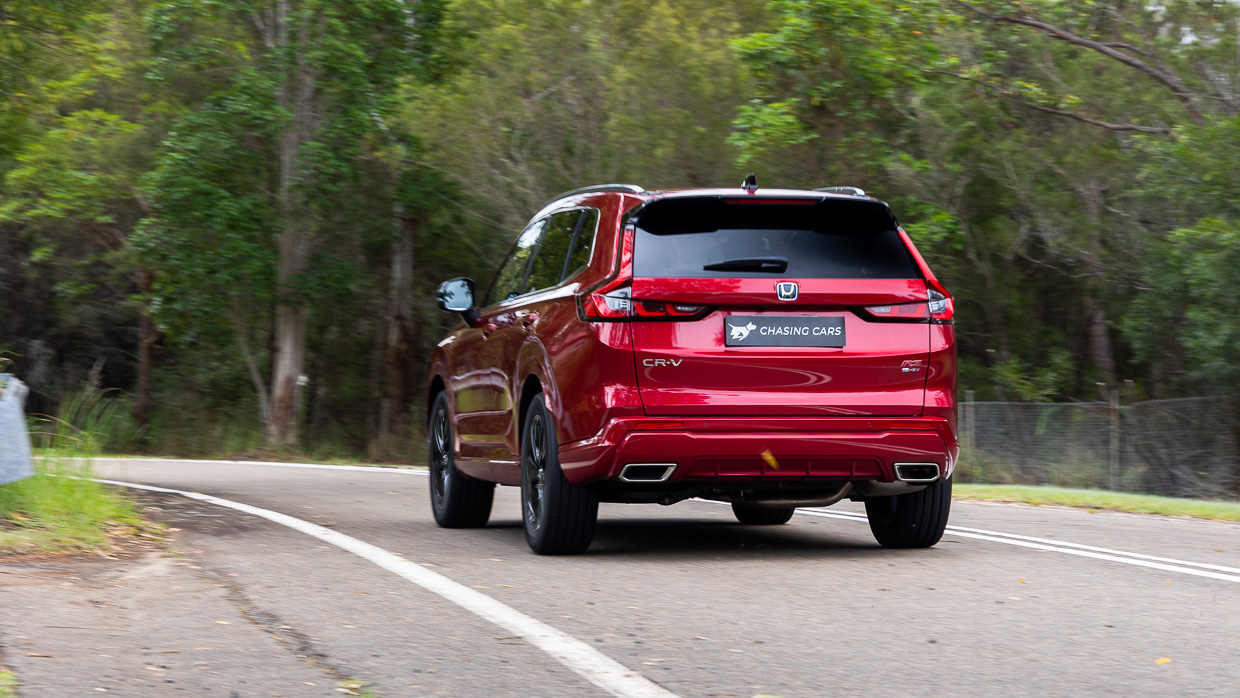
Fact is Fred was a bit of a loner in the Chasing Cars garage this month. And everyone wanted a piece of it. Tom Place needed wheels for a Sydney-Canberra round trip for a Toyota BZ4X launch. I commandeered Fred for a weekend family jaunt to the New South Wales south coast. And Zak Adkins stretched the Honda’s hybrid legs with a trip to Queensland.
A thorough workout, then, so what’s Honda’s petrol-electric experience like? In short, around town or on the highway, the Honda’s e-HEV system behaves similarly, though not identically, that of rival Toyota’s, specifically hybrid RAV4s.
Both powertrains do the three-step shuffle autonomously, switching between combustion and electron power, or both combined at once. Each seems to favour EV drive off the mark, delivers raucous barks from their Atkinson cycle petrol engines under load and, of course, don’t demand plugging into a charging point, ever.
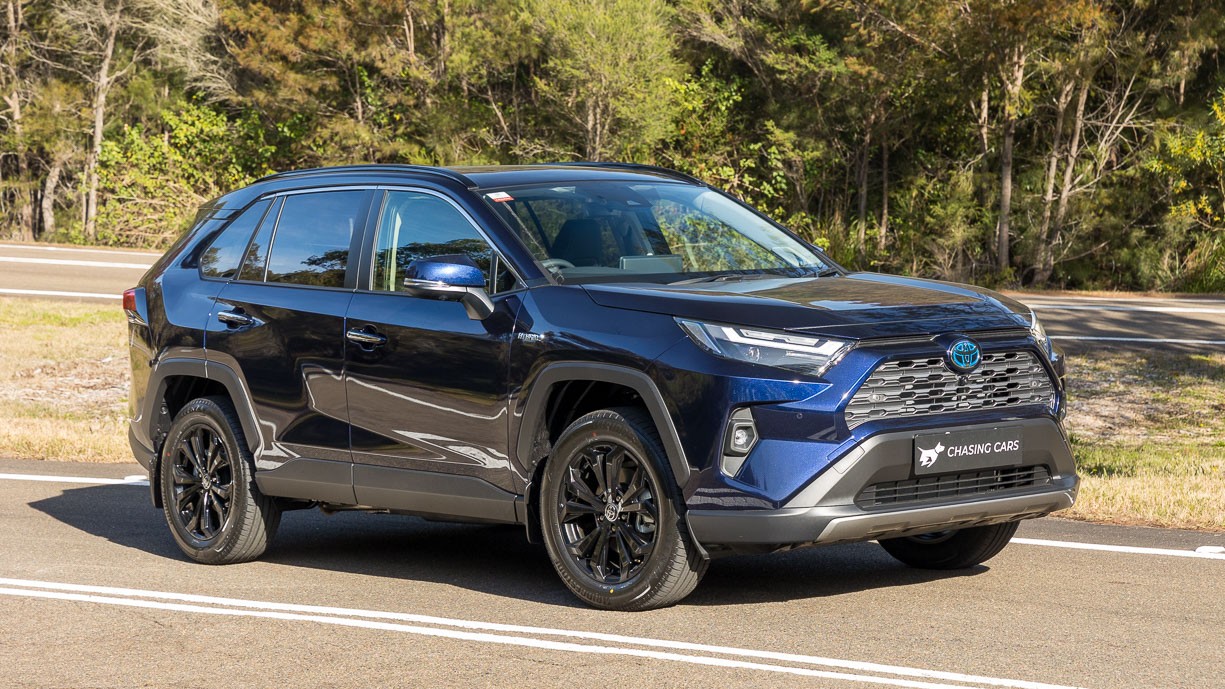
So when a RAV4 Cruiser Hybrid 2WD happened to pass through the Chasing Cars garage this month, it was an opportune time to A-B their respective manners and characteristics.
The verdict? Sorry Toyota fans but, on balance, the CR-V is a little nicer. The Honda’s petrol engine is a little quieter, the switchover points are smoother and cleaner, and the Honda tends to lean into electric drive with generally more enthusiasm more often than the RAV4. Fred feels a little more refined and polished.
Performance, too, tips slightly in Honda’s favour. On our test track, the e-HEV RS rattled off 7.54sec 0-100km pass, bettering the RAV4’s 7.64sec. That’s only one-tenth, but a win is a win.
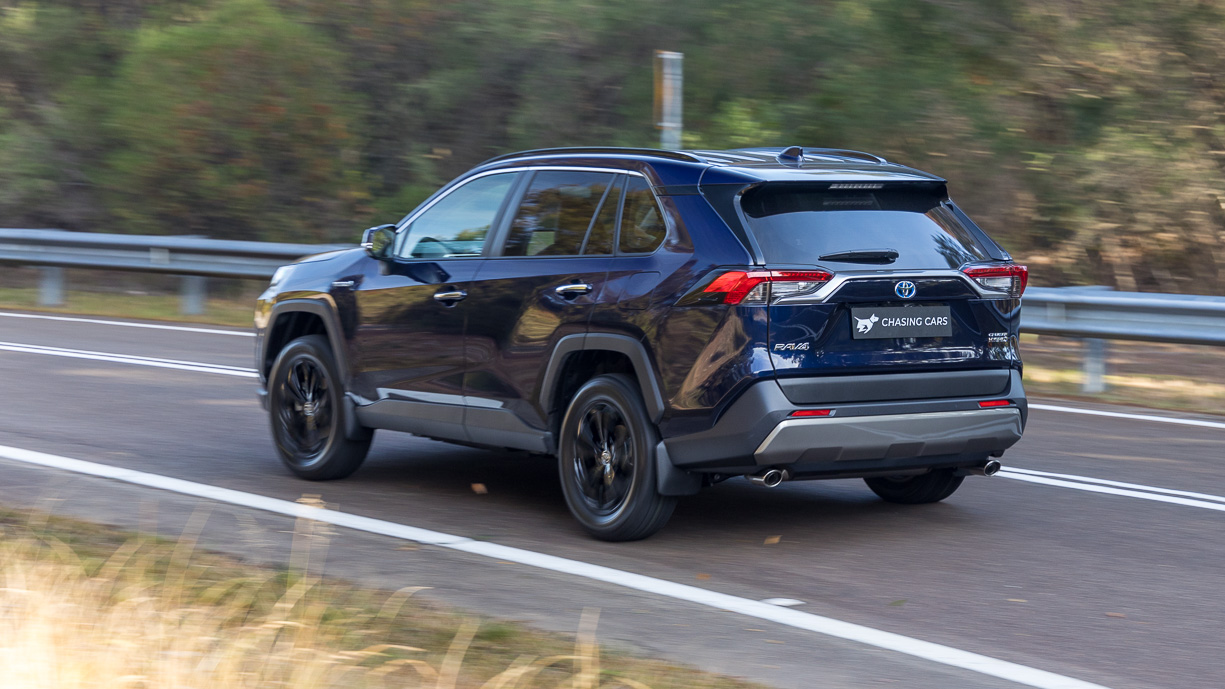
The Honda offers more stopping power, too, with Fred’s excellent 36.55m emergency stop over a metre and a half shorter than the RAV4’s more leisurely 38.13m measure.
However, Fred does play second fiddle in fuel consumption. Front-driven RAVs are regularly a 4.5L/100km average proposition in Chasing Cars assessment. And two months in, Fred rarely settles below the sixes no matter how it’s driven, even if it dips occasionally into the low fives, usually in slow peak-hour crawls.
On the open road, where the CR-V has spent much road time, its plus-six-litre thirst shouldn’t surprise – Honda’s official extra-urban claim is 5.8L/100km.
Given petrol CR-Vs arrive with 6.1L-6.5L highway claims, depending on the number of seats (five or seven) and powertrain configuration (front or all-wheel drive), you have to wonder whether the e-HEV technology is worth the dividends…if you care at all about the complexity the system brings.
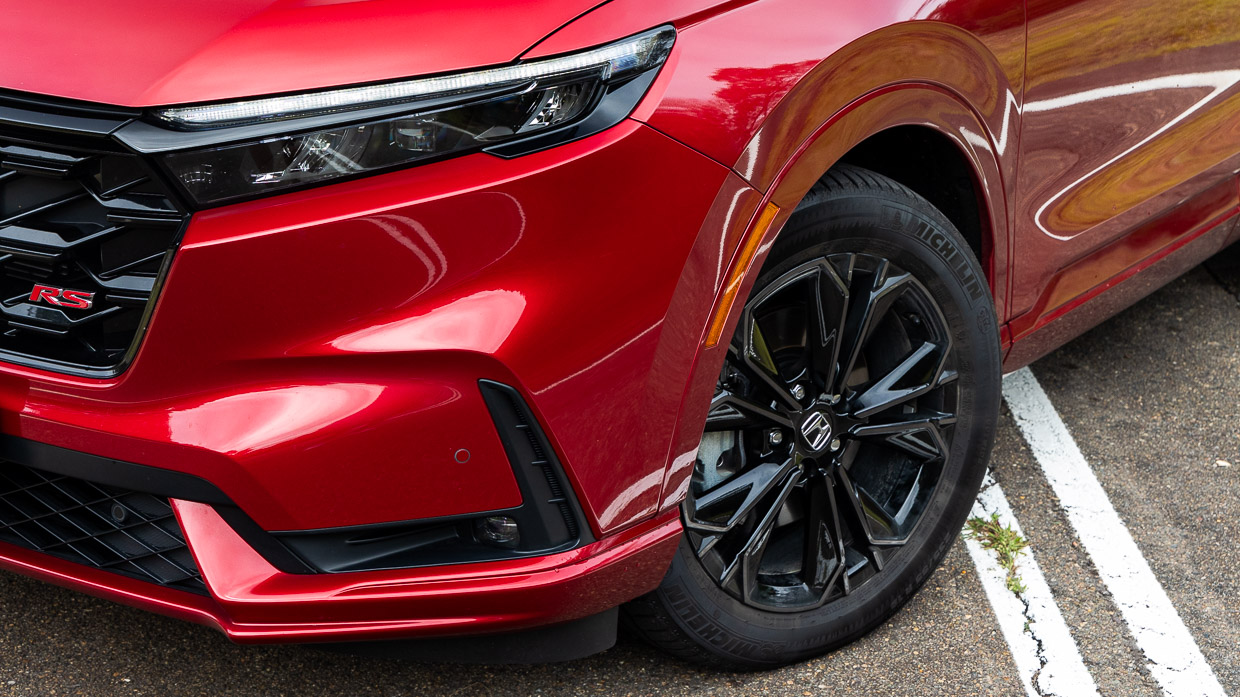
If you are uninterested in the e-HEV propellerhead stuff, stay tuned for Zak’s Queensland road tripping adventures in next month’s update.
But if you are curious about Honda’s unorthodox hybrid spin, read on…
The e-HEV system has two electric motors mounted side by side in parallel. One, the 135kW and 335Nm ‘driving’ motor, can spin to 14,500rpm, is directly connected to the drive shaft, propels the vehicle (solely in EV mode), and regenerates the battery under deceleration. So far, so straightforward.
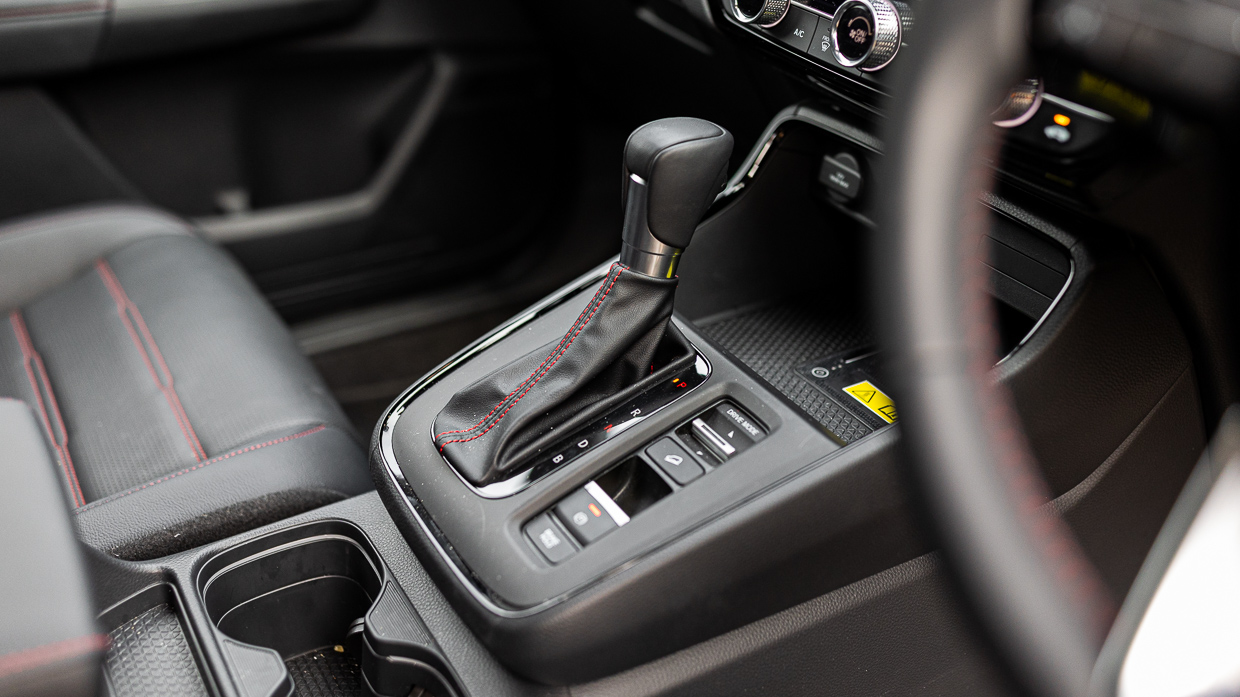
The other is the so-called ‘generator’ motor that’s 120kW, spins to 17,000rpm, and according to Honda literature, pulls different tricks. This unit is “directly connected to the (petrol) engine” and “dedicated to charging the battery” and when Hybrid drive mode is active e-HEV “uses electric motors together with the petrol engine during everyday driving.”
Important to note is that despite being a dual-motor format, e-HEV still only drives one axle, as a front driver. Right-o, but there’s more…
At cruising speeds, where electric propulsion is inefficient, the petrol engine has a ‘lock-up’ clutch mechanism that directly drives the front wheels (ala Mitsubishi Outlander PHEV). However, for an added trick, the e-HEV system has two lock-up ratios – one high speed and one low speed – so that the engine can also direct drive at lower speeds “in the city” while also “improving climbing performance”.
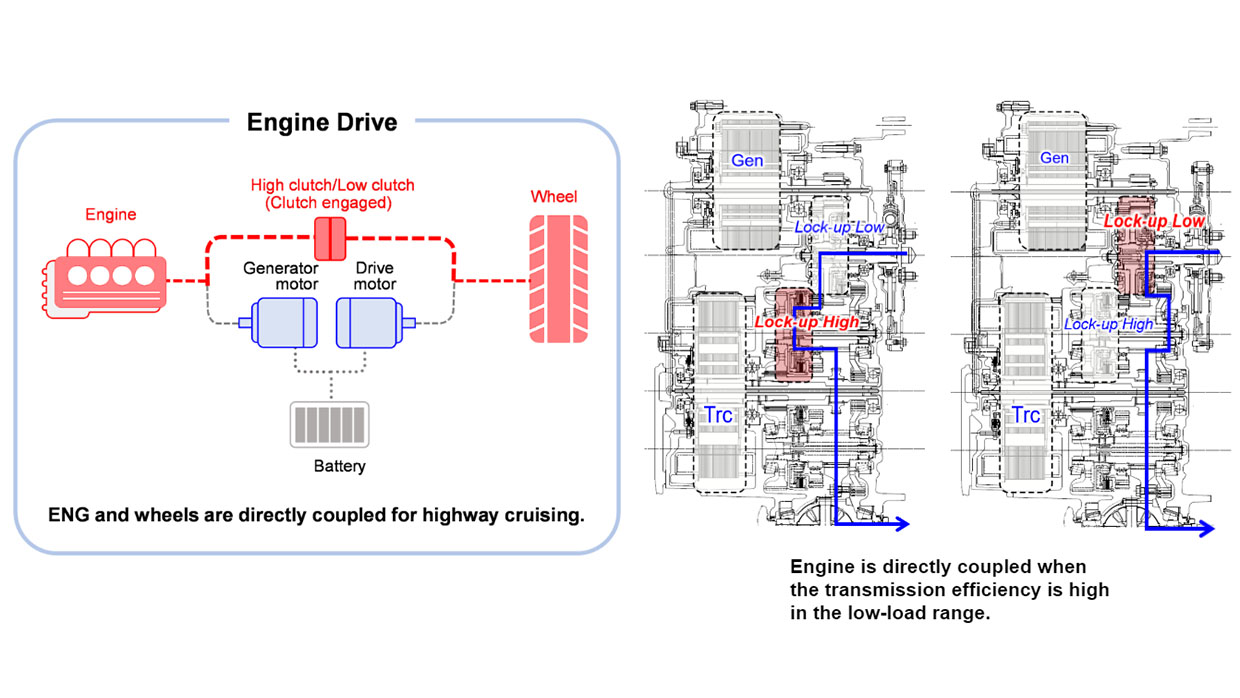
And the CVT bit? Well, there isn’t actually a conventional continuously variable transmission as we all know and that few love. Honda’s ‘E-CVT’ design uses separate gears for the engine and motor drive, which allow engine speeds to remain quite low while the actual road speed when cruising out on a highway can remain high.
Got all of that?
There’s also some ‘emotional’ trickery, too. Select sport drive mode and a Linear Shift Control program varies the engine speed to simulate upshifting gear-changes at full throttle if you decide to go for gold. And it’s complemented by bolder sonic fakery via the speaker system of an Active Sound Control generator.
But it’s really a facade. And we’re fast realising that the CR-V is more a genuine RS in appearance – and potentially in dynamics – than it is a proper performer. More concerningly, though, is that Fred is going to have to start returning sub-five-litre consumption around town to mount a solid challenge to the RAV4 hybrid’s so-far measurably superior frugality.
After awkward introductions, the flash new SUV and a 50-something father of three settle into a comfortable honeymoon period in month 1
The right car and the right time…but the wrong place. For boring and inconsequential reasons, on the day of delivery, Fred happened to be parked up 850km from where I was expecting it would be. And in the wrong state.
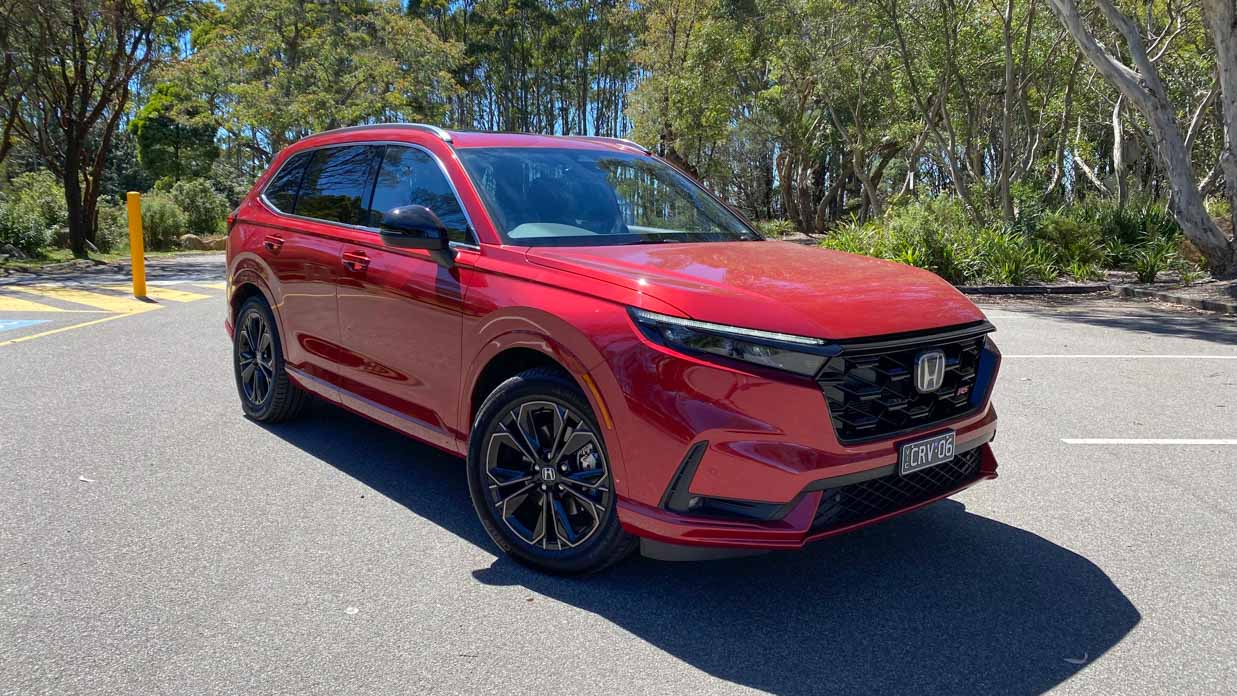
So after successfully negotiating the Australian domestic air travel crapshoot – an endeavour deserving its own gambling disclaimer – I’m introduced to Fred, freshly detailed and gleaming, not in Sydney but parked in a compound near Victoria’s Tullamarine Airport.
Despite 3582km on odo, the CR-V is daisy fresh, blemish free, sat polished and handsome under Victorian late-summer sunlight, seemingly ready for the trek north to Sydney 1000km away.
It’s an easy gameplan. I’m taking the longer scenic route towards the gold fields, taking in Mount Macedon, Bendigo, the border at Echuca, then into New South Wales up past Deniliquin and on to Wagga Wagga before joining the Hume south of Gundagai.
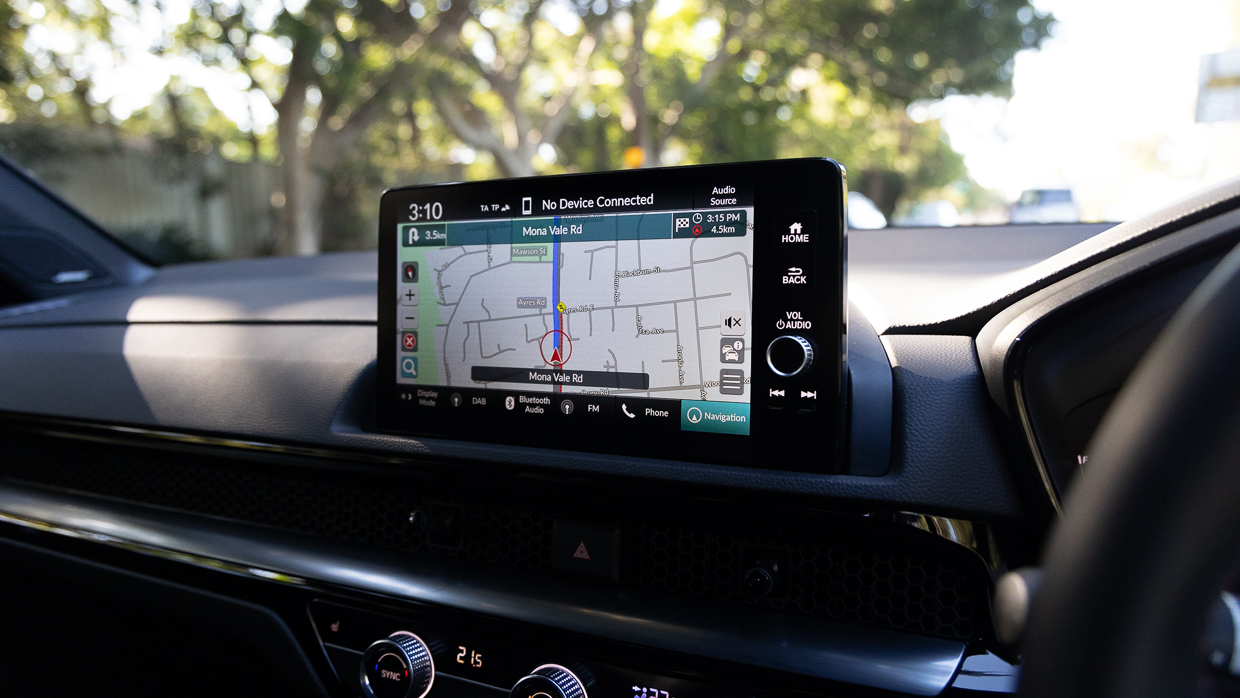
It’s not the most direct route, but if I can cut the slog of Hume between Melbourne and Sydney, surely one of Australia’s most dangerously boring long-ish hauls, in half, I’m a happier camper.
A couple of corners and three minutes in, I stop. Apple CarPlay refuses to make a solid connection. And in the quest for sanity during the trek ahead, I need my podcasts. First-world problems…
Three more turns and a few kays along the Calder Freeway later, I steer Fred into the Northbound BP fast-food-o-rama, in the shadow of the creepy former Thunderdome at Calder, swearing under my breath.
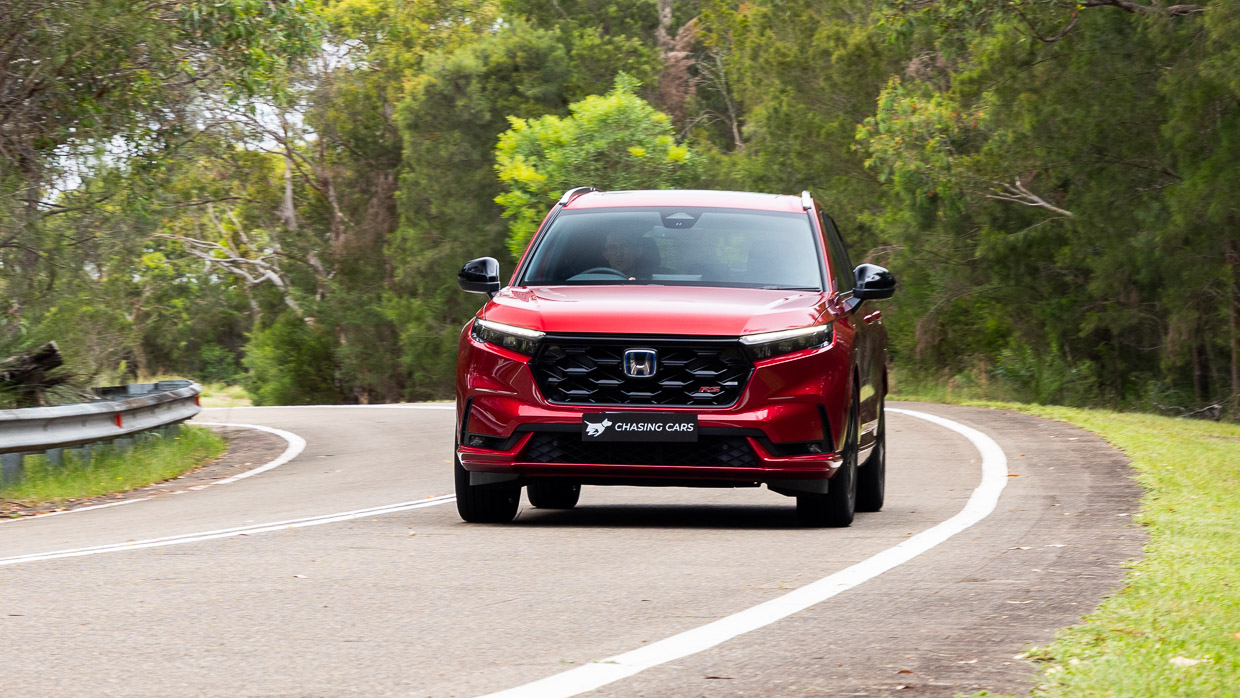
I’ve barely settled into my CR-V experience and its road departure mitigation system begins to relentlessly scream bloody murder at me.
Two unscheduled stops in around 10 minutes. It’s not a great start…
A 12-plus-hour trip pinned to feel-good hits of 1984 on FM radio I could (barely) deal with. But I won’t last 12 minutes with this Honda bleating at me without pause while it fights me for steering control on straight, 110km/h-signposted blacktop.
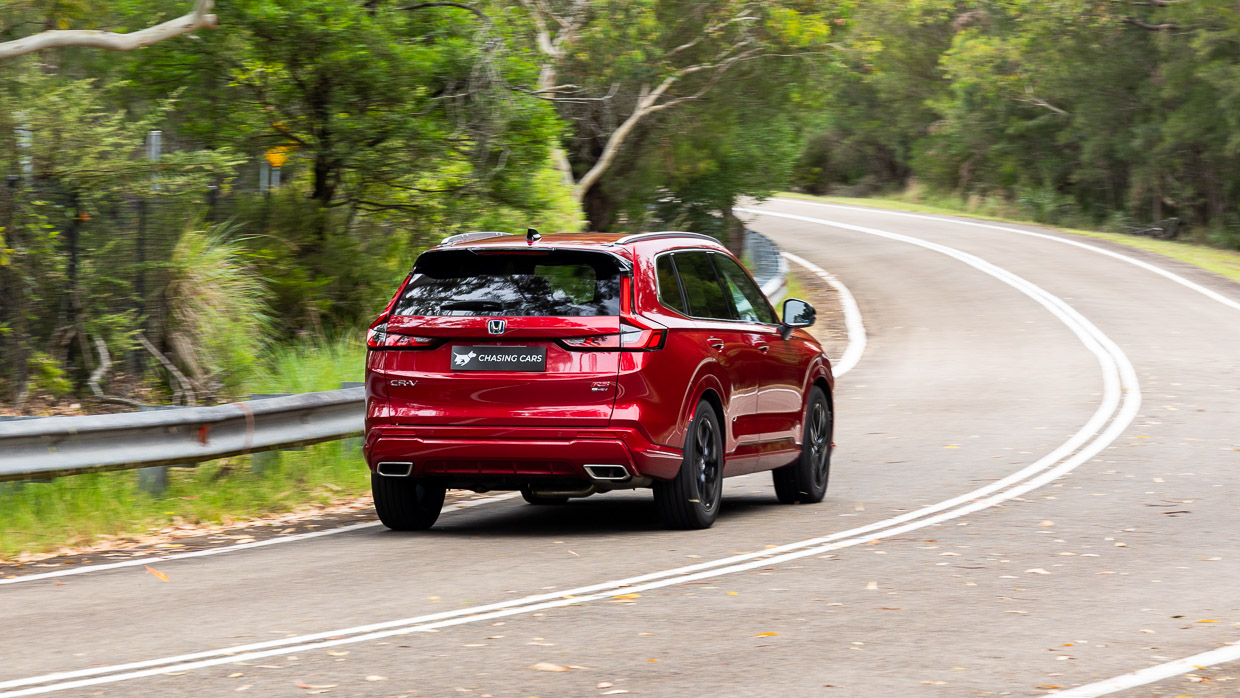
If I can’t ‘fix’ this ‘fault’, it’ll be a quick trip back to Tulla and adios for Fred.
After poking about the dash (nope), the console (nope), and through the nooks and crannies of the media touchscreen (nope), I find a safety systems submenu in the 10.2-inch driver’s screen using the wheel right-thumb click roller. Two rolls and click later, the road departure system – that’ll fight you nowhere near the blacktop verge – is defeated.
At least until you stop and then restart the car again…
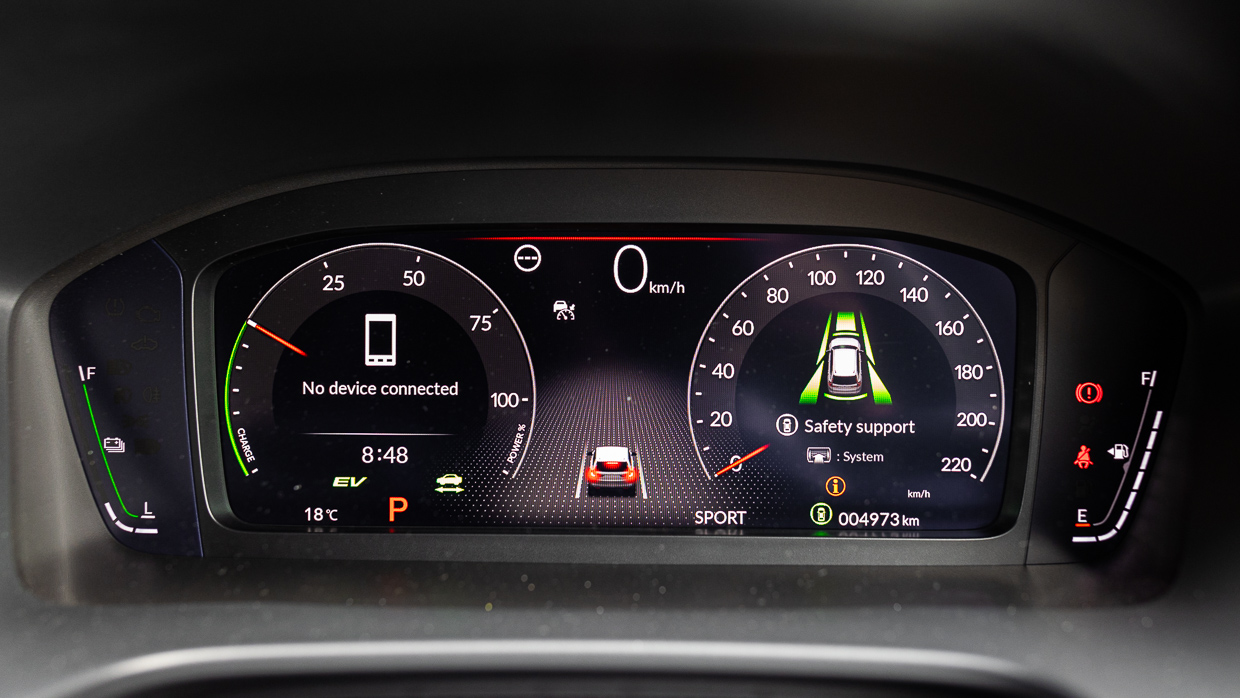
Why? It’s not a ‘Honda thing’: both the HR-V small SUV and Civic hatch fit similar road departure mitigation, and having driven both recently neither are afflicted by CR-V’s strong-armed tendencies. An ‘ANCAP thing’? Not when HR-V is rated and the CR-V, at the time of writing, is not.
It’s poorly calibrated, hugely interfering and activates stupidly at speeds above 30km/h, so on back streets. This ‘safety’ feature should never have crawled off Honda’s R&D bench. Who signed off on this rubbish?
But from here, 15 minutes in and gremlins quashed, the relationship with Fred takes a hookturn for rosier, less-profanity-filled horizons.

The embarrassingly rollercoaster patch of Calder Freeway between Keilor and Digger Rest is hardly the Vic Gov infrastructure’s finest hour, but its lumpy nature serves to demonstrate Fred’s wonderful compliance at speed. And the Honda’s cosseting ride only gets better further north towards the Gold Fields, where roads become significantly less seasickening.
It’s really the ride quality and nature of the seats – wonderfully shaped for both support and comfort – that almost instantly makes the CR-V a first-rate long-hauler once you’ve dialed up the cruise control to 109km/h (or less), lest one risks the wrath of Victoria’s infamously unforgiving rossers.
A quick detour up Mount Macedon brings the obligatory caffeine hit and the first taste of the 2.0-litre Atkinson cycle petrol four to work hard for its keep, its 135kW and undisclosed torque (around 180Nm) buzzing away, either driving the front wheels or charging the battery as a generator. It does both, or either, though at times it’s tough to decipher exactly what it’s doing when.
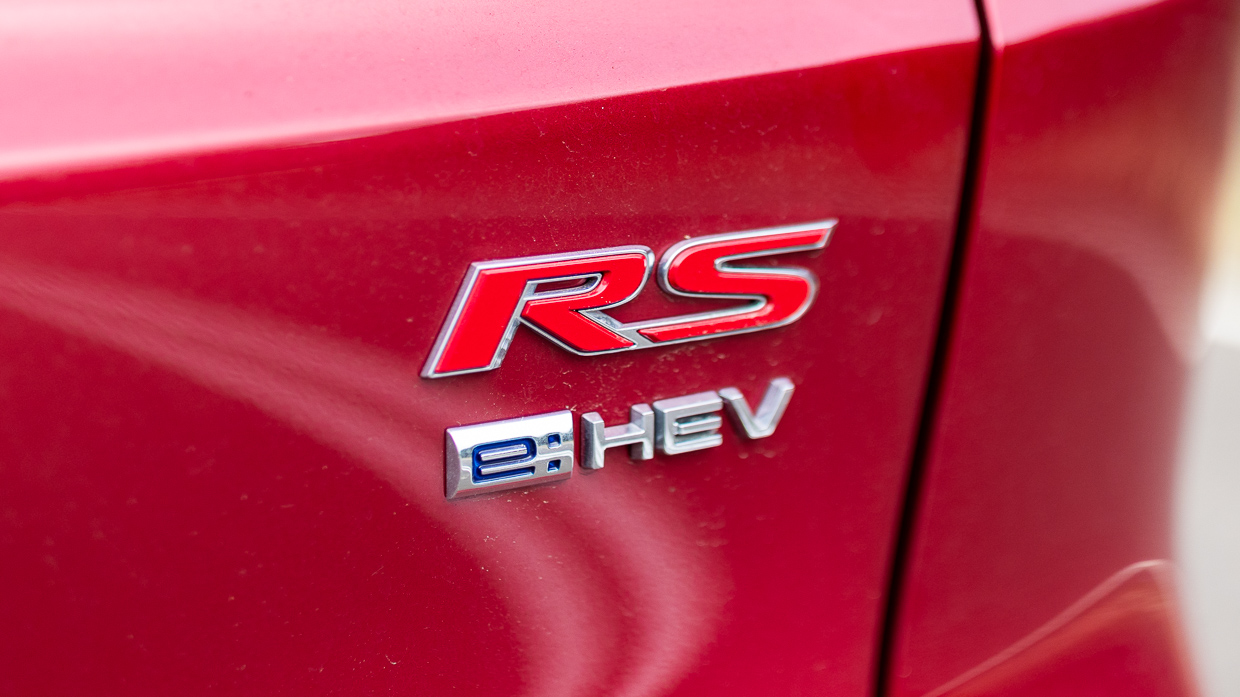
By the seat of the pants, at times, the e-HEV character seems like Toyota’s hybrid with a vastly wider pure electric drive operating window. At others, it’s a bit like the system in the Mitsubishi Outlander PHEV, where the engine clocks on with a sweaty ruckus every time the vehicle is pointed uphill.
By the time I cross the Murray River at Echuca and enter New South Wales, a few hundred kays further north, I’m being sold hard on Fred’s considerable grand touring pleasantries.
The whole trip, it was rock solid and quiet save for tyre noise on coarse chip surfaces. There’s a real hunkered-down manner to the chassis that makes it feel more like a sports wagon than an on-stilts SUV.
Consumption, too, at mid-fives indicated is quite good. But exceptional? Well… For a system that defaults to electric drive, seemingly more often and enthusiastically than your typical Toyota format, it perhaps ought to be a bit thriftier. But more on that in a future update, after more investigation around town…
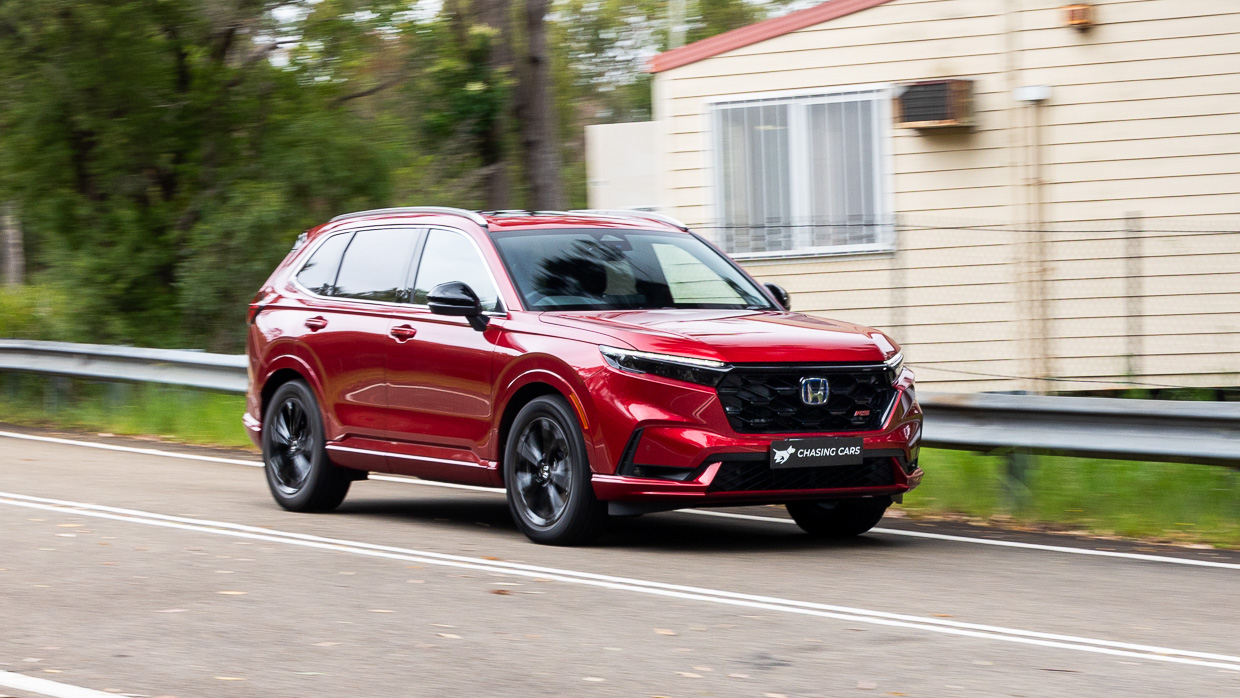
As I ascend up through the south-central New South Wales rural landscape, my affection for Fred grows with every passing sleepy midday township. I like the roads here – narrow and lumpy enough to keep the concentration levels high and rarely trafficked midweek. It’s a fine antidote to the biscuit boring Hume and its frequent right-lane lollygaggers too ignorant to stick to the road rules.
The fact that Japan’s geekiest powertrain wizardry can function like clockwork on crappy 91-octane is godsend in regions where premium is at a, erm, premium.
I’m really settling into this experience that large acts like EV motoring so much of the time – because it is – and yet there’s no abnormal range anxiety or having to contend with humanity’s dark side via the public DC fast-charging experience, of which there’s little in these parts anyway.
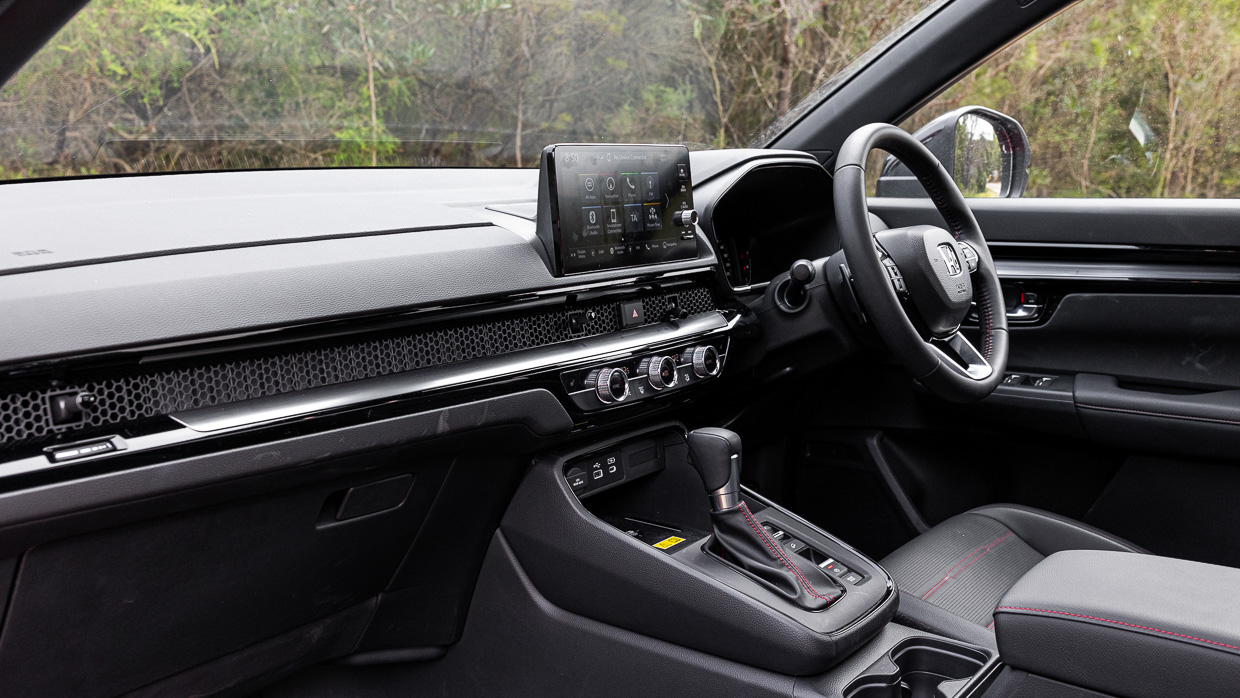
A (mostly) hassle-free electrified experience for touring big country blacktop? Fred makes a solid case for it.
I slip through ‘Wagga’, round onto the Hume, and top the tank near a dog on a tucker box. I then embark on the final, uninteresting four hours north to Sydney, a stretch so many Aussies have slogged so many times, spurred on today by the power of tunes and podcasts blasted at volume on the 12-speaker Bose audio system that’s pretty good, if not that rave-worthy.
By the time I hit the abode of Chez Dupriez I’d clocked up 1000kms neat on my first drive, a trip that reveals that Fred is a fine, quiet and comfy long-haul tourer. And one with excellent pews that’d give the wonderful seats in my last long-termer, the Lexus RX350h Luxury, a run for its money.
That’s one-tenth of my available long-term range, still with six months of custodianship to go. I’d better throttle off for a bit…
That’s easy. Firstly, an all-new model in the hotly contested midsize SUV segment deserves a very deep dive. And, secondly, the Fred-spec petrol-electric flagship grade is Honda’s first stab at what’s generally been the most popular segment leader with its most popular powertrain option: Toyota’s RAV4 hybrid.
And unlike the plethora of RAV4 variant choices available, the big-dollar front-drive e-HEV RS is CR-V’s only hybrid option.
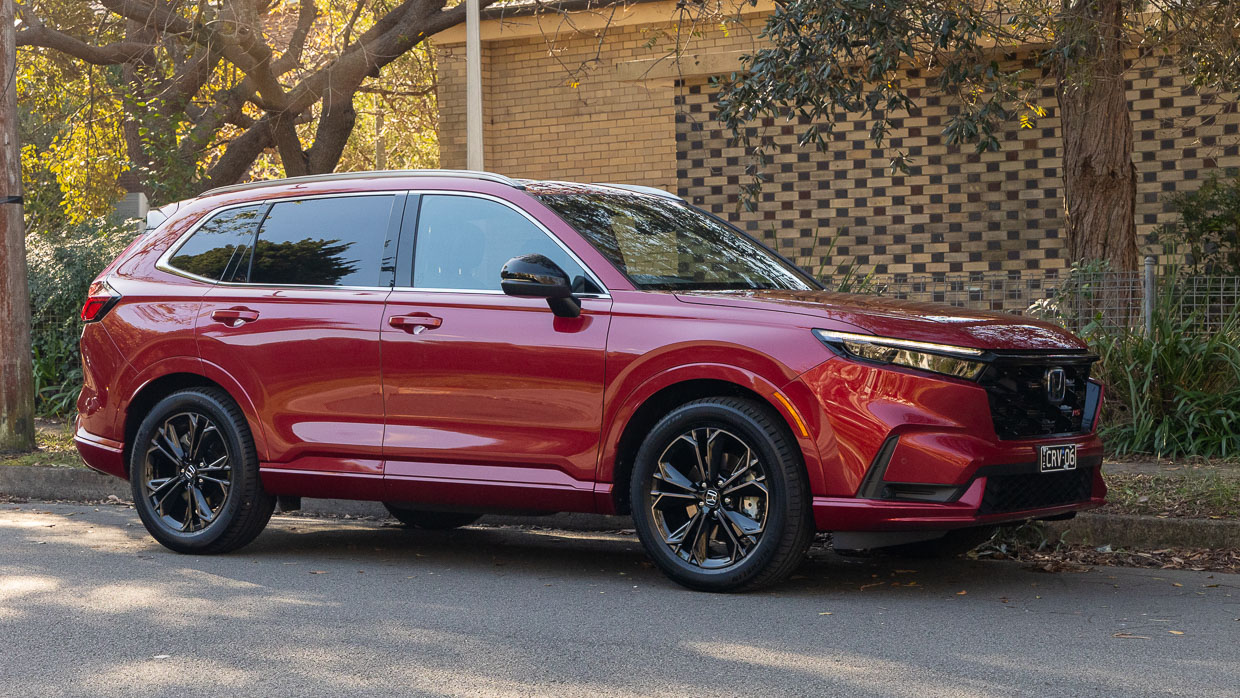
Given RAV4 and the in-demand Mazda CX-5 aren’t spring chickens any more, and that newcomers in hybridised Mitsubishi Outlander and Nissan X-Trail haven’t (yet) set sales charts on fire, the sixth-gen CR-V lobs with lots of promise yet much to prove.
In some ways, Fred’s an easy sell. The larger size, the handsome unisex appeal of the design, the upmarket-lifted and modernised presentation and overly sporty swagger bring the requisite vibe and presence.
But the e-HEV RS isn’t a cocktail for all tastes. It’s pricey, it’s front-drive only and is only available as a five-seater, in a range that also offers turbocharging, all-paw drive and seven-seat options, all for lower outlay.
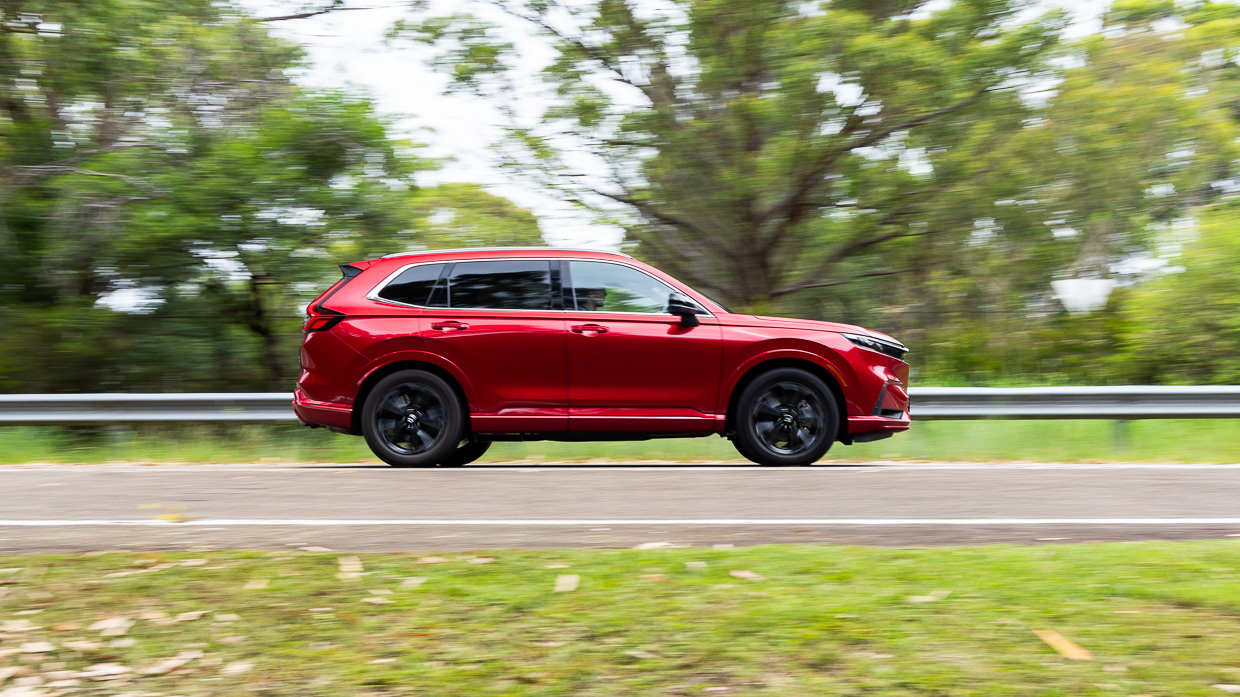
And that’s before those of us without engineering degrees – many potential buyers, yours truly – attempt to get our heads around its complex hybrid drive system…
The simple techno-breakdown is this: first hands-on impressions are that, in effect, the e-HEV isn’t much different to Toyota’s design. It offers pure electric drive sometimes and also offers petrol drive from a 2.0-litre naturally aspirated engine combined or separately depending on the situation. And it’s self-charging so you don’t ever need to plug it in.
Functionally, though, it’s quite complex: two different electric motors with different functionality, a petrol engine driving wheels across two different strategies while also charging the battery, and a complex on-the-fly interplay. We’ll delve further into this in a future long-term update.
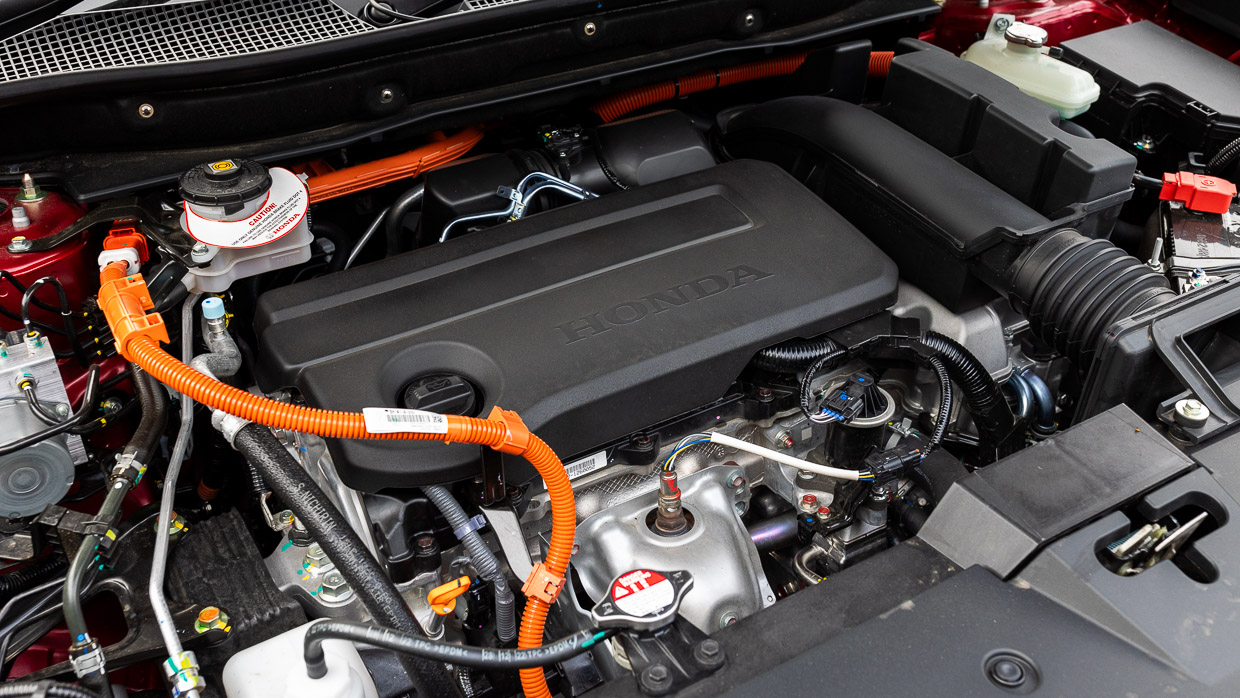
For now, the key points are 152kW of (combined system) power and 335Nm of peak (electric) torque, promising 5.5L/100km combined and even thriftier 4.9L urban consumption claims whilst running on crappy 91-octane fuel. Around town, it’s claimed to return safely less than half the consumption of any other CR-V variants’ 9.3-9.9L/100km claims.
Of course, we’ll tick off the list of disciplines any self-respecting family hauler needs to contend with during fair and reasonable Aussie ownership: lots of urban, lots of highway, plenty of back-roads and fair smattering of unsealed surfaces owners will encounter high and low across our fine land.
And with its “designed for joy” marketing catchphrase in mind, we’ll see if its sporty vibe translates into an on-road experience that actually encourages enthusiastic driving.
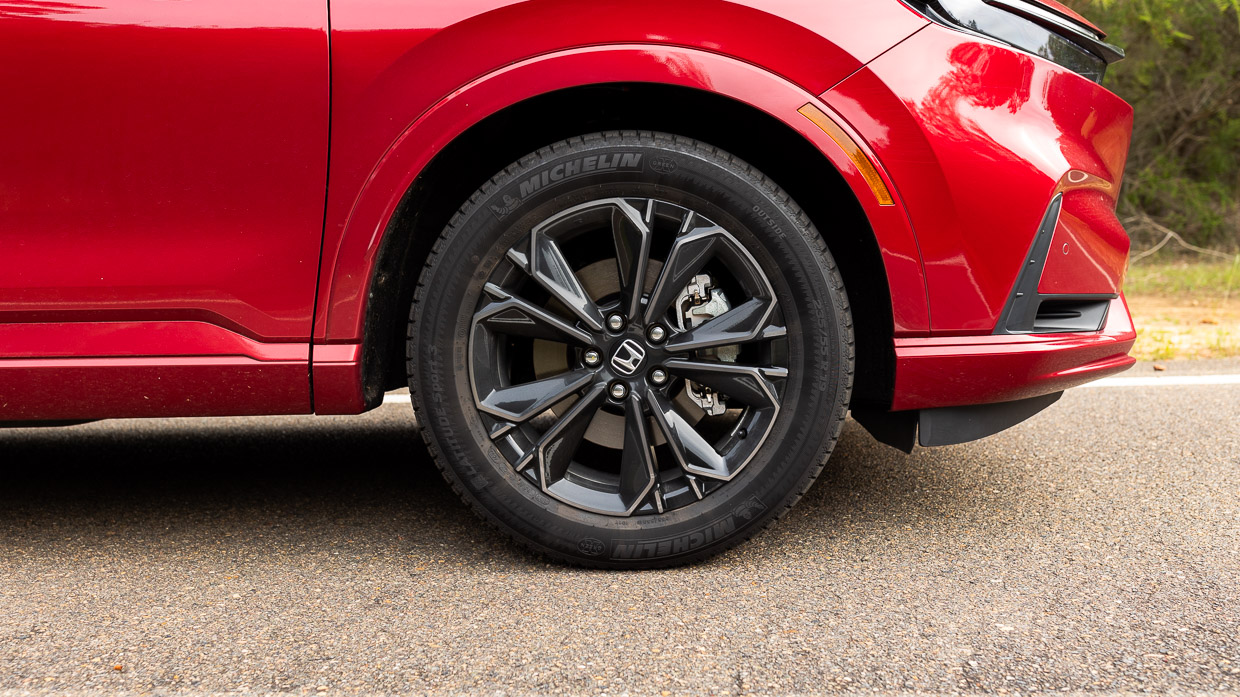
What we’ll likely avoid is snow or ice (no AWD), serious off-roading (ditto, plus limited ground clearance) or towing (just 750kg braked) because frankly, for any of this, the e-HEV RS isn’t the ideal choice in the CR-V lineup.
But for all other reasonable expectations of Aussie mass-market family hauling, Fred will become the subject of much scrutiny.
In short, we didn’t. You can have any one of the six available colours for the e-HEV RS at no cost, but the hands-down hero hue is Fred’s Ignite Red paintwork. Honda has a rich history of fantastic paint colour choice, and this rich almost Italian rosso looks fast standing still. A no-brainer, really.
Otherwise, the flagship offers no options per say, merely accessories (more below). A standard features include:
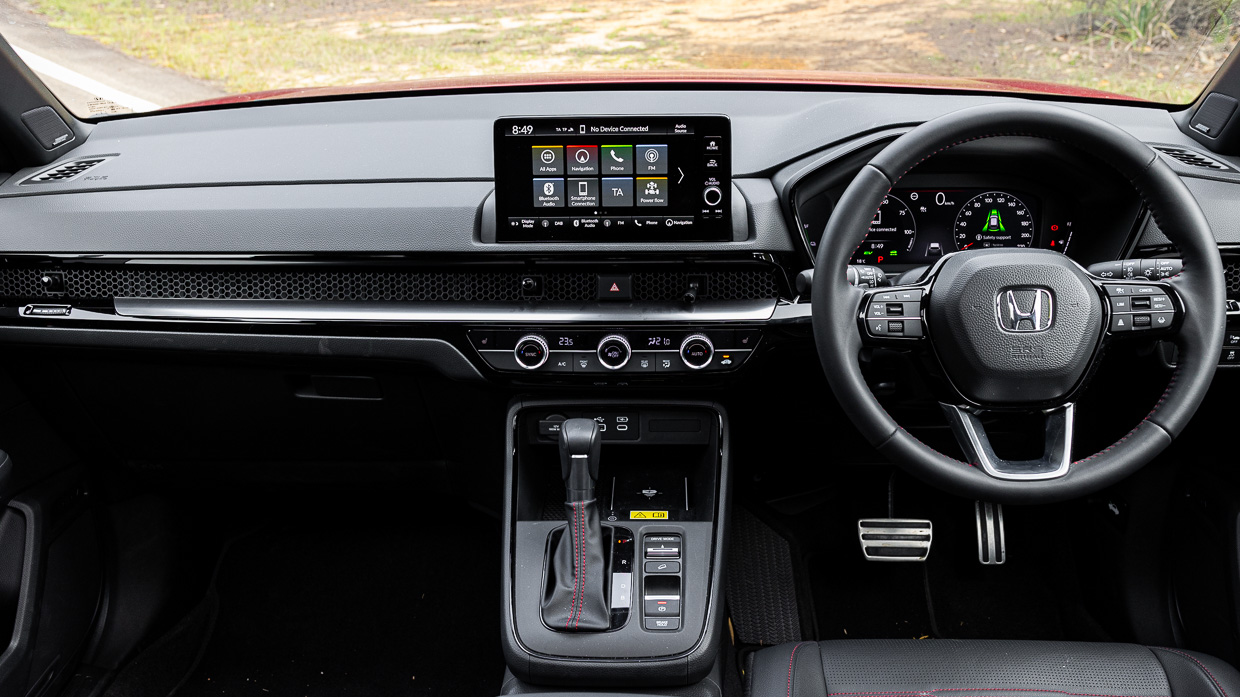
There’s a lot packed in standard, but what’s missing?
Well, no seven-seat CR-Vs fit three-zone climate control and there’s no front seat ventilation. Some rivals offer vastly larger dual-digital displays and media window dressing, while the omission of a 360-degree camera is rough for its price point. The lack of wireless Android Auto won’t win favour with that format’s fans.
Accessories include an Essential Pack ($960) of mats, protectors and an oddment organiser box, items we’d hardly call, ahem, essential.
Then there’s the Touring Pack ($2112) that bundles in a tow bar kit, roof rack cross bars and all-weather mats. However, given the hybrid’s braked towing is, at just 750kg, only half that of the petrol-powered five-seat CR-Vs (1500kg), really, why bother?
Key specs (as tested)
About Chasing cars
Chasing Cars reviews are 100% independent.
Because we are powered by Budget Direct Insurance, we don’t receive advertising or sales revenue from car manufacturers.
We’re truly independent – giving you Australia’s best car reviews.
The estimate provided does not take into account your personal circumstances but is intended to give a general indication of the cost of insurance, in order to obtain a complete quote, please visit www.budgetdirect.com.au. Estimate includes 15%^ online discount.
^Conditions Apply
Budget Direct Insurance arranged by Auto & General Services Pty Ltd ACN 003 617 909(AGS) AFSL 241 411, for and on behalf of the insurer, Auto & General Insurance Company Limited(ABN 42 111 586 353, AFSL 285 571).Because we don’t know your financial needs, we can’t advise you if this insurance will suit you. You should consider your needs and the Product Disclosure Statement before making a decision to buy insurance. Terms and conditions apply.
Indicative quote based on assumptions including postcode , 40 year old male with no offences, licence suspensions or claims in the last 5 years, a NCD Rating 1 and no younger drivers listed. White car, driven up to 10,000kms a year, unfinanced, with no modifications, factory options and/or non-standard accessories, private use only and garaged at night.
^Online Discounts Terms & Conditions
1. Discounts apply to the premium paid for a new Budget Direct Gold Comprehensive Car Insurance, Third Party Property Only or Third Party Property, Fire & Theft Insurance policy initiated online on or after 29 March 2017. Discounts do not apply to optional Roadside Assistance.
2. Discounts do not apply to any renewal offer of insurance.
3. Discounts only apply to the insurance portion of the premium. Discounts are applied before government charges, taxes, levies and fees, including instalment processing fees (as applicable). The full extent of discounts may therefore be impacted.
4. We reserve the right to change the offer without notice.